Read more of this story at Slashdot.
Ronald.phillips
Shared posts
Sensitive US Military Emails Spill Online
Deus Ex Community Update Version 2.4

Updated DXT to latest version (1.5.6) Proper DXT.int handling Added Han's OpenGL Added UEDfix4 (dependencies) Updated Confix to latest version
Nocebo – Shudder Review (4/5)
The post Nocebo – Shudder Review (4/5) appeared first on Heaven of Horror.
Filmmakers Request Identities of Reddit Users To Aid Piracy Lawsuit
Read more of this story at Slashdot.
Bryan Fuller Fell In Love With Friday The 13th Because Of Pamela Voorhees
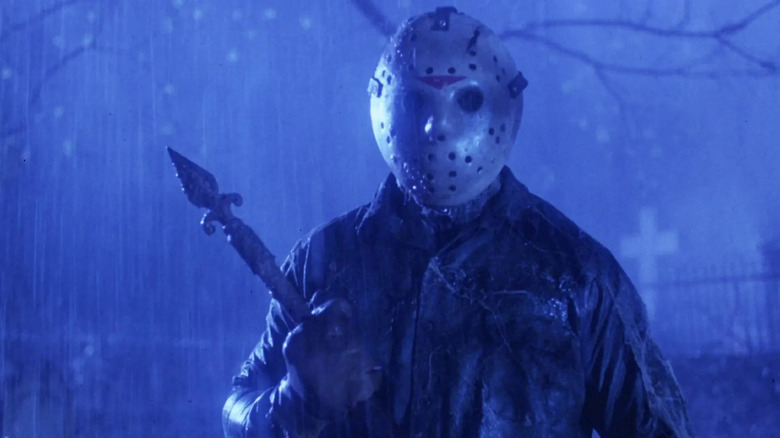
The best horror villains are ones that make us feel a twinge of compassion. A sympathetic origin story can leave audiences doing mental gymnastics when they find themselves feeling empathy for someone killing people onscreen left and right. As exhibit A, I present Jason Voorhees.
Known in pop culture vernacular simply as "Jason," the sub-human killer from the "Friday the 13th" franchise hacks his way through a gaggle of horny teens for the better part of a dozen films and a brief TV series. During that time, he's also gone to space, vacationed in New York, and battled fellow killer Freddy Krueger.
And now, he's baaaack (sorry, wrong horror franchise). Well, maybe. Peacock recently announced a "Friday the 13th" prequel series, "Crystal Lake." Legal battles that are arguably more scary than the movies have made it somewhat unclear who will or won't appear in the new series. But that's OK, because it's actually Jason's mother, Pamela Voorhees, that made "Crystal Lake" showrunner Bryan Fuller ("Hannibal") fall in love with the franchise.
The Sometimes-Forgotten Killer From 'Friday The 13th'
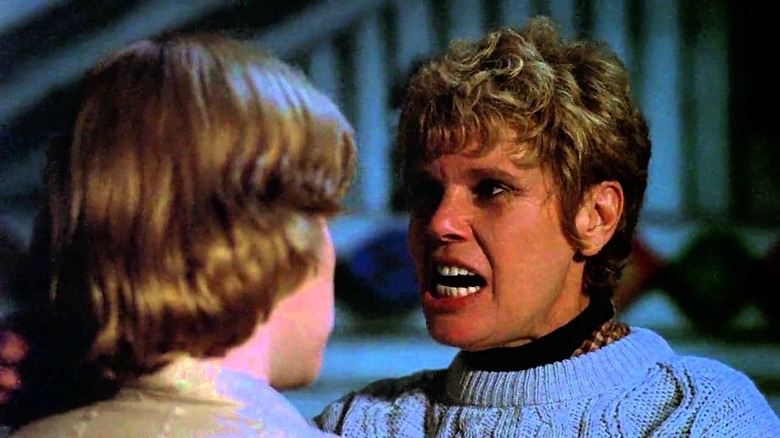
"Friday the 13th" typically evokes images of Jason in his hockey mask and the chilling "ch ch ch, ah ah ah" tune that accompanies most of his kills. But longtime fans of the franchise are well aware that Jason barely makes an appearance in the first movie and that the hockey mask doesn't enter the equation until "Friday the 13th Part III."
Jason's tragic origin story has always made him the focus of the franchise. A quick refresher: As a child, Jason Voorhees lived with physical abnormalities and mental disabilities. His mother, Pamela, was employed by Camp Crystal Lake. While staying at the camp with his mother, Jason was bullied and thrown into the lake, where he drowned. No one was ever held responsible for Jason's presumed death.
In the first film, the son of the original Camp Crystal Lake owners attempts to re-open the camp 22 years after Jason's drowning. Pamela Voorhees avenges her son by killing the owner and all but one of the camp counselors. Pamela is eventually decapitated by the lone surviving camp counselor, who then discovers that Jason is still alive.
Because of his own experiences, producer Bryan Fuller says Jason's tragic backstory and the undying love from Pamela Voorhees are what made him fall in love with the series.
Fuller Could Relate To Jason's Mother
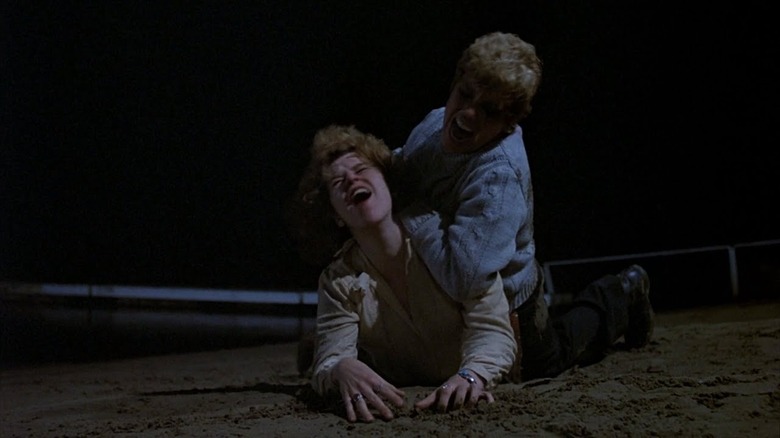
Bryan Fuller revealed to Fangoria that his earliest experience with storytelling began by sitting around campfires re-telling the "Friday the 13th" plot synopsis to his friends. It was also around this time that he developed empathy for Jason Voorhees and his mother. "I was working with special needs kids," Fuller revealed. "I was hyper-aware of the challenges of parenting special needs children."
That awareness is what drew Fuller to "Friday the 13th." For him, the movie wasn't just a scary slasher flick. It was made personal because of Pamela Voorhees and what she did for her son.
"One of the kids I sat with during most of that volunteer work, his mother simply couldn't handle him. He was amazing and unique and had a different sort of intelligence, but he was also non-verbal. His mother couldn't get far enough away from him. And so, when I read about 'Friday the 13th' and saw the lengths Pamela Voorhees would go to for her special needs child, I found myself in this Venn diagram of influences, and I fell in love with the series."
Fuller says nothing is off the table as far as what "Crystal Lake" will include. Given his emotional connection to Pamela Voorhees, I expect the complex relationship between Pamela and Jason to be passionately explored. "I feel that I'm in a unique space to tell this story and to make sure it is loved and cared for appropriately," Fuller said.
"Crystal Lake" does not yet have an official streaming premiere date listed.
Read this next: The Saddest Character Deaths In Horror History
The post Bryan Fuller Fell In Love With Friday The 13th Because Of Pamela Voorhees appeared first on /Film.
Building a Retro Linux Gaming Computer - Part 26: Coming to You Live
Atomic Heart Ditches Ray Tracing on PC at the Very Last Minute

During our fifth and last pre-release interview with Atomic Heart game director Robert Bagratuni, we were told that consoles would not support ray tracing at launch.
We thought that implied the PC version would carry on as promised. After all, Mundfish and NVIDIA had paraded ray traced features since the very announcement of the first-person shooter game.
Here's a GeForce RTX video unveiled at Gamescom 2018, when NVIDIA confirmed the presence of ray tracing for shadows, reflections, and ambient occlusion.
Here's a few choice quotes from that article:
[...] Most noticeably, Ray Traced Reflections add accurate, real-time reflections to Atomic Heart’s curved objects and surfaces, to its super shiny labs, to its water, and to numerous other game elements.
Similarly, the implementation of Ray Traced Shadows enables the casting of more accurate, more complex shadows that are rendered based on the properties of the scene.
And with regards to Ambient Occlusion, the previously-used Screen Space technique left small physical details lit too brightly, or large occluded areas too dark. With Ray Tracing, detail can be shadowed on a per-pixel basis, generating perfect, completely-accurate Ambient Occlusion shadows.
Following that unveiling, NVIDIA and Mundfish even released a downloadable Atomic Heart RTX Tech Demo at CES 2019. While the link doesn't work anymore, you can check it out in the video below.
Our first interview with Bagratuni dates to only a few days later. At that time, he said the implementation of ray tracing in Atomic Heart hadn't been daunting. Moreover, he proclaimed ray tracing was the future of graphics.
Doing real time ray tracing sounds like a daunting task on the surface, but the reality was much less intimidating. When we found out there was a special branch of Unreal with ray tracing support we were excited to see how it would improve Atomic Heart. NVIDIA provided us with access to the branch and the tools we needed to execute. They were there to help us when we needed it. The integration went fairly smooth considering it is running on new hardware and a new API and doing something that could never be done in real time before. The results blew us away.
Unfortunately, some people seem preoccupied with frame rates, but it should not overshadow the fact that real time ray tracing in games is a big, big deal for developers and it was impossible to do until just recently. It is way too early in our development process to be focusing on frames per second and performance. Plus, we are using ray tracing for three elements: reflections and refractions, shadows and ambient occlusion. Even with all that ray tracing, the performance is already good, and we expect further improvement as we progress through the development to release. We are working very closely with NVIDIA on optimising the game. Atomic Heart also will use NVIDIA DLSS so we are seeing performance improves from that, also.
[...] ray tracing delivers jaw-dropping lighting effects. It is truly going to change the way games are created.
In August 2020, during our second interview, Bagratuni said ray traced reflections and shadows would 'stay for sure'.
We're working closely with NVIDIA to make the most beautiful game world you've seen. Solutions we've shown you previously are ray-traced reflections and shadows. They stay for sure. Currently, we're working on the implementation of DLSS and other features recently made possible due to RTX and DX12.
Just a year ago, in our third interview, we were told that Atomic Heart would even feature the newly released RTX Global Illumination (RTXGI) in some places.
Yes, we're using RTX GI at some places in the game, where it is most justified, and we really like what it brings to the game.
Lastly, in our fourth interview released in early January, we inquired about the RTX Direct Illumination feature. Bagratuni said it wouldn't be available at launch.
Not yet, but we are working closely with NVIDIA to make this happen in the future with one of the game updates.
This would have been a good time to let us know that all the other ray tracing features discussed for years wouldn't be available at release either.
Indeed, when I got my hands on the game, I didn't see any explicit ray tracing option. I thought it might have been absorbed into the regular settings for some weird reason and asked for clarification. At last, only a few hours before the game's launch, we received a clear answer: Atomic Heart won't have ray tracing for now. The exact quote is:
Following the launch, we'll revisit the needs of our gamers.
In the review-in-progress, I noted that Atomic Heart looks good and performs extremely well. It is possible that Mundfish decided to pull ray tracing out of the final build because the performance would have suffered for most PC users (those without access to the RTX 40 GPUs, for instance), but this contradicts earlier statements where we were told that ray tracing performance was already good years ago. The reviewer guide provided by NVIDIA also mentions an 'RT Ultra' preset that doesn't exist in the build I checked out, again pointing to a recent decision to remove the ray traced features from the game.
At any rate, there's no doubt communication about its availability at launch should have been clearer and its timing more appropriate than it has been from both Mundfish and NVIDIA. It's also the first time something like this happened, as far as memory goes; hopefully, it doesn't become a trend.
The post Atomic Heart Ditches Ray Tracing on PC at the Very Last Minute by Alessio Palumbo appeared first on Wccftech.
Hope Van Dyne Had Children In Deleted Scenes From Ant-Man And The Wasp: Quantumania
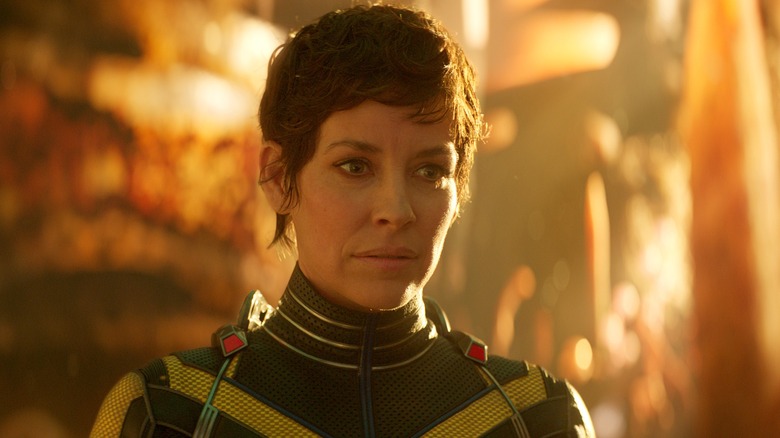
"Ant-Man and the Wasp: Quantumania" is finally out, officially kickstarting Phase Five of the Marvel Cinematic Universe with a story that feels as weird (if not weirder) than the multiversal shenanigans of "Doctor Strange in the Multiverse of Madness," and finally delivering the Quantum Realm adventure we were waiting for. There's a brand new and menacing villain in Kang, and many, many strange little creatures that look straight out of an episode of "Rick and Morty."(perhaps because screenwriter Jeff Loveness previously wrote for the anarchic animated sci-fi show).
While it feels like this movie is setting up a lot of future plot threads for the MCU going forward, there are also things that are likely just introduced here, never to be brought up again (sadly, it's doubtful the techno-ants will return). Then there are things that not only will not be brought up again, but didn't even make it to the final movie.
Every Marvel movie has deleted scenes and entire plot lines that were cut (arguably too many). Now that "Ant-Man and the Wasp: Quantumania" is out, we're already starting to learn about the scenes and characters that never made it to the screen, including a some new members of the Lang/Pym/Van Dyne family.
A Vision Of Things That Could Be, Or Things To Come?
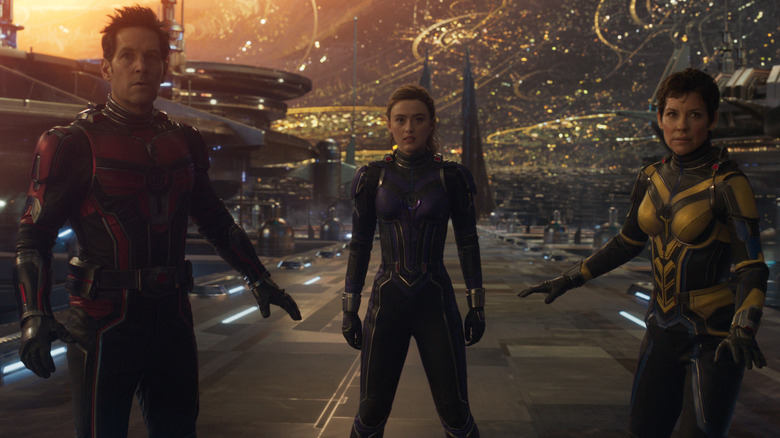
The mother of young actor Lucas Grant recently shared on Instagram some behind-the-scene pictures from the set of "Ant-Man and the Wasp: Quantumania," revealing he was at one point meant to play Hope van Dyne's son in the movie. Not only that, but one photo shows Evangeline Lilly's Hope smiling and holding two young children, a boy and a girl. Given that Grant said he was meant to play Hope's son, it's logical to assume the other girl was going to be her daughter in the film.
The big question is, how exactly was this scene supposed to play out in the movie? There is zero indication that Hope had kids, let alone two of them. The biggest clue as to what exactly this is, is the fact that Lilly has long hair in the picture, when she has short hair in the movie. This means there are two likely scenarios: the future, or an alternate timeline.
At one point in the movie, Kang tells Scott he can give him "more time," the same thing he promised Janet. In the movie, that line referred to Scott being able to be in a timeline where he saw his daughter grow up, but what if he meant a timeline where he and Hope had kids? Perhaps this was even a vision of a possible future where that might happen, but only if Kang was able to put a stop to his variants.
Then there's a third, way scarier possibility. What if this is not Scott's or even Hope's vision of an alternate and happier timeline? What if it is Darren Cross, aka M.O.D.O.K., who sees this vision of himself and Hope raising a family together? Try taking that image out of your brain.
Read this next: R-Rated MCU Scenes We Never Got To See In The Original Cut
The post Hope Van Dyne Had Children In Deleted Scenes From Ant-Man and the Wasp: Quantumania appeared first on /Film.
My 20 Favorite Movies of 2022
-- my review here --
-- my review here --
-- my review here --
-- my review here --
-- my review here --
-- my review here --
-- my review here --
-- my review here --
-- my review here --
-- my review here --
-- my review here --
-- my review here --
-- my review here --
-- my review here --
-- my review here --
-- my review here --
-- my review here --
-- my review here --
Why Lizzy Caplan Isn't Involved In The Party Down Revival
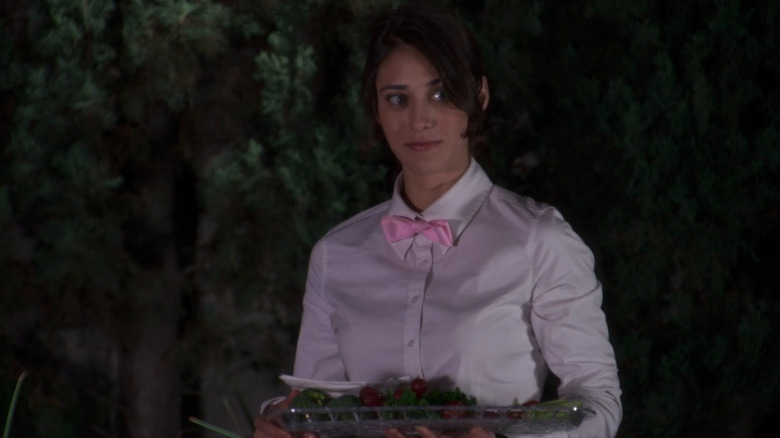
When you become a fan of a TV show, it's fair to say that you want those involved to have successful careers. In fact, you probably don't want them to just succeed. You want your favorite stars to thrive, especially if that series that you love will not be continuing.
When "Arrested Development" ended in 2006 after three seasons, the cast went on to star in fan-favorite films and series such as "Juno," "Despicable Me," "Scott Pilgrim vs. the World," "Archer," "Veep," and more. Following the end of "Community," the study group likewise branched out into a variety of productions. (Jim Rash even won an Oscar.) And the same thing happened to the stars of "Party Down" following its cancellation.
As the creators of all three of these shows would later find out, owing to the level of fame achieved by those involved, it's hard to bring their in-demand casts completely back together again. "Arrested Development" found creative ways to work around their stars' busy schedules. The "#AndAMovie" part of the famous "Community" hashtag has been given the green light, but there's still uncertainty around the return of a few cast members. And the same thing happened to the Starz cult favorite comedy, as it was forced to move forward without one of the key players.
That's right. Unfortunately, Lizzy Caplan's Casey Klein won't be returning to "Party Down" when it comes back later this month for a highly-anticipated third season. But the creative forces behind the revival completely understand and don't hold it against her.
The Pancake Lady
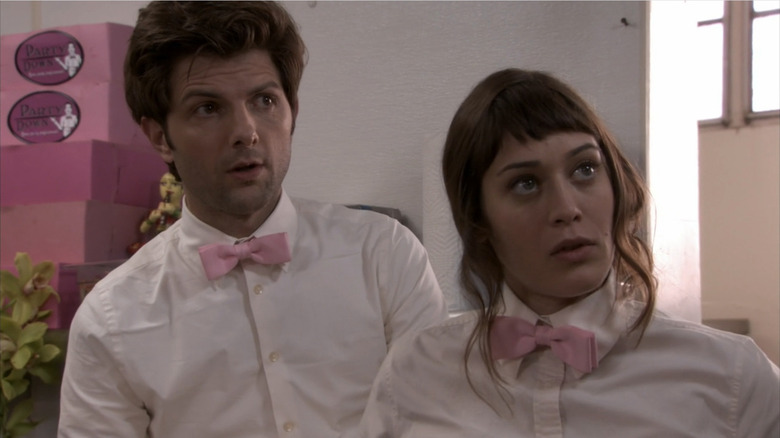
When it was announced that "Party Down" would be returning for a six-episode third season with essentially everyone RSVP-ing, it was disappointing to hear that Lizzy Caplan would be the only one not attending. But the reasons for her absence are totally, well, reasonable. Since her time with the titular catering company of struggling performers and creative types ended in 2010, Caplan's profile has considerably risen in Hollywood. Production on "Party Down" season 3 clashed with Caplan's work on the FX on Hulu miniseries "Fleishman Is in Trouble."
In a roundtable discussion with "Party Down" co-creator John Enbom, /Film's Ryan Scott asked about the Caplan situation and the various factors that contributed to the team moving on without her. Enbom elaborated:
"She was very much a part of it in those early days. We love working with her. We love her character. We thought it would be interesting to see where she was 12 years in and all that. It was just [that] everyone got famous since we did it the first time in a way that scheduling is now the monster for us, trying to figure out how to do stuff. She was the one that ended up just having all these other things lined up in such a way that we could not make it work."
While it's a huge bummer that Casey won't be joining Henry, Ron, Kyle, Roman, Constance, and Lydia for this reunion, hopefully, it's a hit and the network orders another one. Then at that point, we keep our fingers crossed that everyone's schedules match up because we definitely need to see Henry and Casey together again in at least one episode.
"Party Down" season 3 premieres on Starz on February 24, 2023.
Read this next: 12 Underrated Sitcoms That You Should Check Out
The post Why Lizzy Caplan Isn't Involved In The Party Down Revival appeared first on /Film.
Two Supreme Court cases could upend the rules of the internet
The Supreme Court could soon redefine the rules of the internet as we know it. This week, the court will hear two cases, Gonzalez v. Google and Twitter v. Taamneh, that give it an opportunity to drastically change the rules of speech online.
Both cases deal with how online platforms have handled terrorist content. And both have sparked deep concerns about the future of content moderation, algorithms and censorship.
Section 230 and Gonzalez v. Google
If you’ve spent any time following the various culture wars associated with free speech online over the last several years, you’ve probably heard of Section 230. Sometimes referred to as the “the twenty-six words that invented the internet,” Section 230 is a clause of the Communications Decency Act that shields online platforms from liability for their users' actions. It also protects companies’ ability to moderate what appears on their platforms.
Without these protections, Section 230 defenders argue, the internet as we know couldn’t exist. But the law has also come under scrutiny the last several years amid a larger reckoning with Big Tech’s impact on society. Broadly, those on the right favor repealing Section 230 because they claim it enables censorship, while some on the left have said it allows tech giants to avoid responsibility for the societal harms caused by their platforms. But even among those seeking to amend or dismantle Section 230, there’s been little agreement about specific reforms.
Section 230 also lies at the heart of Gonzalez v. Google, which the Supreme Court will hear on February 21st. The case, brought by family members of a victim of the 2015 Paris terrorist attack, argues that Google violated US anti-terrorism laws when ISIS videos appeared in YouTube’s recommendations. Section 230 protections, according to the suit, should not apply because YouTube’s algorithms suggested the videos.
“It basically boils down to saying platforms are not liable for content posted by ISIS, but they are liable for recommendation algorithms that promoted that content,” said Daphne Keller, who directs the Program on Platform Regulation at Stanford's Cyber Policy Center, during a recent panel discussing the case.
That may seem like a relatively narrow distinction, but algorithms underpin almost every aspect of the modern internet. So the Supreme Court’s ruling could have an enormous impact not just on Google, but on nearly every company operating online. If the court sides against Google, then “it could mean that online platforms would have to change the way they operate to avoid being held liable for the content that is promoted on their sites,” the Bipartisan Policy Center, a Washington-based think tank, explains. Some have speculated that platforms could be forced to do away with any kind of ranking at all, or would have to engage in content moderation so aggressive it would eliminate all but the most banal, least controversial content.
“I think it is correct that this opinion will be the most important Supreme Court opinion about the internet, possibly ever,” University of Minnesota law professor Alan Rozenshtein said during the same panel, hosted by the Brookings Institution.
That’s why dozens of other platforms, civil society groups and even the original authors of Section 230 have weighed in, via “friend of the court” briefs, in support of Google. In its brief, Reddit argued that eroding 230 protections for recommendation algorithms could threaten the existence of any platform that, like Reddit, relies on user-generated content.
“Section 230 protects Reddit, as well as Reddit’s volunteer moderators and users, when they promote and recommend, or remove, digital content created by others,” Reddit states in its filing. “Without robust Section 230 protection, Internet users — not just companies — would face many more lawsuits from plaintiffs claiming to be aggrieved by everyday content moderation decisions.”
Yelp, which has spent much of the last several years advocating for antitrust action against Google, shared similar concerns. “If Yelp could not analyze and recommend reviews without facing liability, those costs of submitting fraudulent reviews would disappear,” the company argues. “If Yelp had to display every submitted review, without the editorial freedom Section 230 provides to algorithmically recommend some over others for consumers, business owners could submit hundreds of positive reviews for their own business with little effort or risk of a penalty.”
Meta, on the other hand, argues that a ruling finding 230 doesn’t apply to recommendation algorithms would lead to platforms suppressing more “unpopular” speech. Interestingly, this argument would seem to play into the right’s anxieties about censorship. “If online services risk substantial liability for disseminating third-party content … but not for removing third-party content, they will inevitably err on the side of removing content that comes anywhere close to the potential liability line,” the company writes. “Those incentives will take a particularly heavy toll on content that challenges the consensus or expresses an unpopular viewpoint.”
Twitter v. Taamneh
The day after the Supreme Court hears arguments in Gonzalez v. Google, it will hear yet another case with potentially huge consequences for the way online speech is moderated: Twitter v. Taamneh. And while the case doesn’t directly deal with Section 230, the case is similar to Gonzalez v. Google in a few important ways.
Like Gonzalez, the case was brought by the family of a victim of a terrorist attack. And, like Gonzalez, family members of the victim are using US anti-terrorism laws to hold Twitter, Google and Facebook accountable, arguing that the platforms aided terrorist organizations by failing to remove ISIS content from their services. As with the earlier case, the worry from tech platforms and advocacy groups is that a ruling against Twitter would have profound consequences for social media platforms and publishers.
“There are implications on content moderation and whether companies could be liable for violence, criminal, or defamatory activity promoted on their websites,” the Bipartisan Policy Center says of the case. If the Supreme Court were to agree that the platforms were liable, then “greater content moderation policies and restrictions on content publishing would need to be implemented, or this will incentivize platforms to apply no content moderation to avoid awareness.”
And, as the Electronic Frontier Foundation noted in its filing in support of Twitter, platforms “will be compelled to take extreme and speech-chilling steps to insulate themselves from potential liability.”
There could even be potential ramifications for companies whose services are primarily operated offline. “If a company can be held liable for a terrorist organization’s actions simply because it allowed that organization’s members to use its products on the same terms as any other consumer, then the implications could be astonishing,” Vox writes.
What’s next
It’s going to be several more months before we know the outcome of either of these cases, though analysts will be closely watching the proceedings to get a hint of where the justices may be leaning. It’s also worth noting that these aren’t the only pivotal cases concerning social media and online speech.
There are two other cases, related to restrictive social media laws out of Florida and Texas, that might end up at the Supreme Court as well. Both of those could also have significant consequences for online content moderation.
In the meantime, many advocates argue that Section 230 reform is best left to Congress, not the courts. As Jeff Kosseff, a law professor at the US Naval Academy who literally wrote the book about Section 230, recently wrote, cases like Gonzalez “challenge us to have a national conversation about tough questions involving free speech, content moderation, and online harms.” But, he argues, the decision should be up to the branch of government where the law originated.
“Perhaps Congress will determine that too many harms have proliferated under Section 230, and amend the statute to increase liability for algorithmically promoted content. Such a proposal would face its own set of costs and benefits, but it is a decision for Congress, not the courts.”
Unofficial Patch 11.3
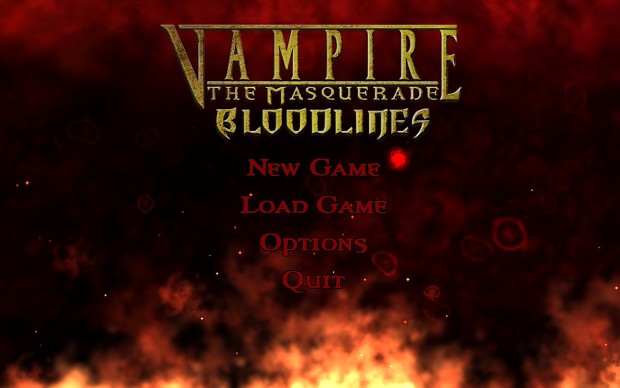
Vampire: The Masquerade - Bloodlines Unofficial Patch 11.3
Always Check These Five Car Parts Before a Long Road Trip

Freak accidents may be out of your control, but the vast majority of “stranded on the side of the highway with no cell service” scenarios can be prevented with a simple, thorough home inspection. Here’s what to look for before hitting the road.
Chris Rock Considers CB4 To Be 'The First Good Rap Movie'
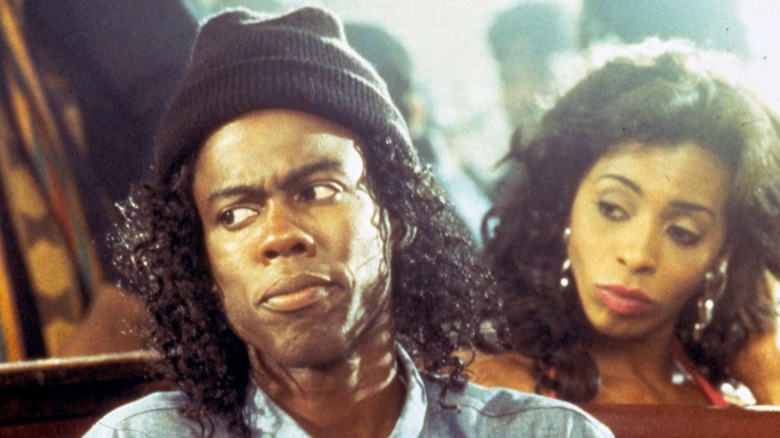
If you're looking to pinpoint the greatest year in hip-hop, it's going to start with a one, followed by a nine, another nine, and end with a number no higher than five. The genre that grew out of Bronx house parties thrown by sonic pioneers like DJ Kool Herc, and survived the faddish exploitation of the early and mid-1980s had finally come of age. Obviously, there were groundbreaking LPs released prior to the '90s, but it wasn't until we entered the final decade of the millennium that explorers like Hank Shocklee, Dr. Dre, DJ Premier, and Prince Paul refined their sounds to bring hard-hitting East Coast beats and blunted West Coast G-funk grooves to the ears of audiophiles across the country.
Hollywood was listening. They weren't necessarily getting it, but they were listening. Mid-'80s films like "Breakin'," "Beat Street" and "Krush Groove" captured the excitement of the burgeoning hip-hop scene to such an ecstatic extent that you could almost excuse their cliché-ridden storytelling. But when the music really took off in 1986, due primarily to the multi-platinum success of Run-D.M.C.'s "Raising Hell" and The Beastie Boys' "License to Ill," studios trivialized the genre by turning The Fat Boys into a kinder, gentler Three Stooges via "Disorderlies," and allowed producer Rick Rubin to direct Run-D.M.C. in the dire vigilante film "Tougher Than Leather."
Hollywood finally harnessed rap's spiking popularity with cautionary urban dramas ("Boyz n the Hood" and "Menace II Society") and savvily modernized Blaxploitation flicks ("New Jack City" and "Deep Cover"). But while hip-hop lent these movies a swaggering authenticity, none of them were about the actual music — which felt like a missed opportunity. So it was both overdue and kind of odd that the first true rap movie to hit the multiplexes in the early-'90s was Chris Rock's parody "CB4."
A Rap Parody Coming Straight Outta Locash
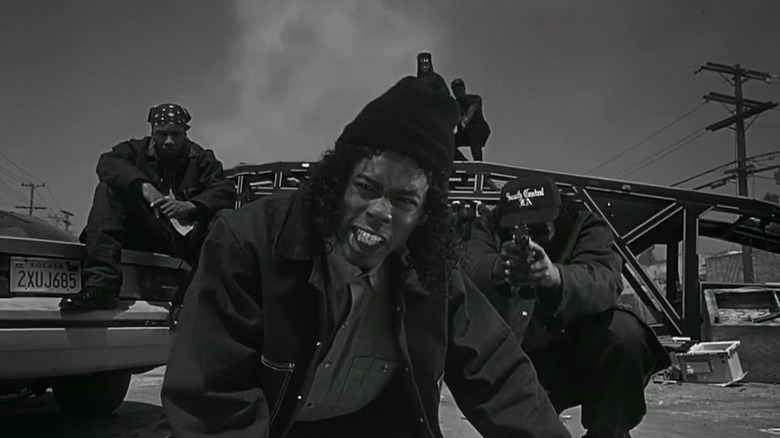
Released in early 1993, "CB4" was both a perfectly timed satire of the genre's excesses and an affectionate celebration of its barely-two-decade history. It kicks off with a montage of hip-hop artifacts set to Doug E. Fresh's ebullient classic "The Show," then gets to lampooning the suburban-kids-turned-gangstas arc followed by more than a few hip-hop stars. It's about being hard, and how confusing the act with reality got more than a few artists in too deep with real-deal gang members. It also ignores the fact that some of these artists weren't suburban brats like Rock's character, but the first movie to be explicitly about rap couldn't possibly be all things to all people.
In a 1993 interview with Spin, Rock, who wrote the film with esteemed cultural critic Nelson George and Robert LoCash, said he was proud of the film's authenticity.
"All the rap stuff is there ... You got the female reporters: 'Why do you call women b***hes and hos?' Phil Hartman plays this politician who's trying to outlaw the group. You got one scene where a bunch of dancers — girls from videos — are talking, and one says, 'You know my left tit was prominently featured in Eric B's last video.' I think it's the first good rap movie."
As a massive hip-hop fan who came of age during the music's ascendance, I'd say, on a surface level (which, as a kid from a small, very white Ohio town, is all I'm qualified to judge), that it effectively spoofs the genre's tendency towards misogyny and flash-in-the-pan novelty. CB4's trial-and-error phase at a local club ("We're The Bag Heads!") is outrageously funny, as is the trio's post-breakup attempts at solo success ("I'm black, y'all!"). And Lance Crouther trying to beat money out of a dead Willard E. Pugh in his coffin may be the most randomly hilarious thing I've ever seen.
Reginald Hudlin Threw A Superior Hip-Hop Party
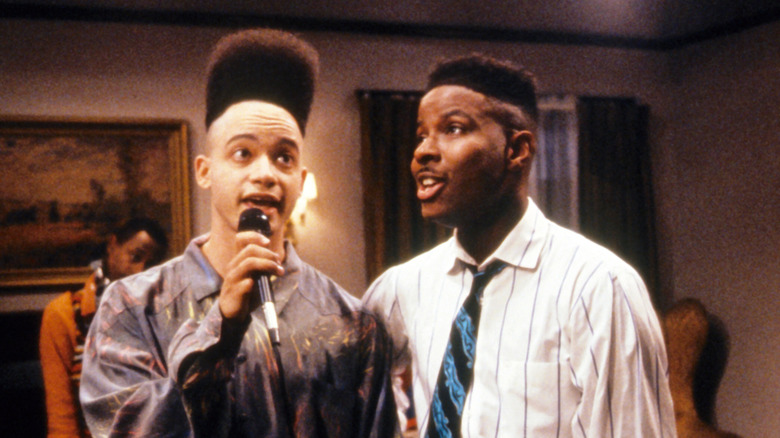
"CB4" is, like most parodies of this nature, hit-or-miss, but the hits are more than worth it. But as for whether it's the first good rap movie, there was one before it that genuinely, good-naturedly conveyed the roof-is-on-fire joy of emceeing.
For a film that spawned two theatrical sequels and one buried-by-its-distributor remake, Reginald Hudlin's "House Party" does not get the love it deserves — by which I mean it belongs in teen comedy pantheon with "American Graffiti" and "Dazed and Confused." The hip-hop duo Kid 'n Play (Christophers Reid and Martin) were the feel-good flipside to the cynically packaged likes of MC Hammer and Vanilla Ice. They know how to put on a show, and they do so without sacrificing the integrity of a burgeoning culture that's ever mindful of its underground roots.
There's a fabulous dance-off between our protagonists and the girls they fancy (Tisha Campbell and A.J. Johnson), a freestyle battle and so much good music. The laughs are supplied by a young Martin Lawrence and two dearly missed greats in Robin Harris and John Witherspoon. It zips by at 100 minutes and is absolutely unbeatable as a comfort-food movie.
But most of all, it's a 1990 snapshot of rap at the moment its finest artists were getting beamed into living rooms by "Yo! MTV Raps." There was no real filter. Acts that would never get rotation on Top 40 radio (e.g. Gang Starr, NWA, and Main Source) found fans in towns they'd never know to tour. The audience diversified, and, for a brief period, major labels left the emcees and their producers alone. "House Party" celebrates the glory of what once was, while "CB4" satirizes how it would all get homogenized to hell. I enjoy the latter, but I'd rather get lost in the former.
Read this next: The 15 Best Comedy Movies From Black Directors
The post Chris Rock Considers CB4 To Be 'The First Good Rap Movie' appeared first on /Film.
Thomas Jane Questions If The Mist Could Keep The Same Controversial Ending Today
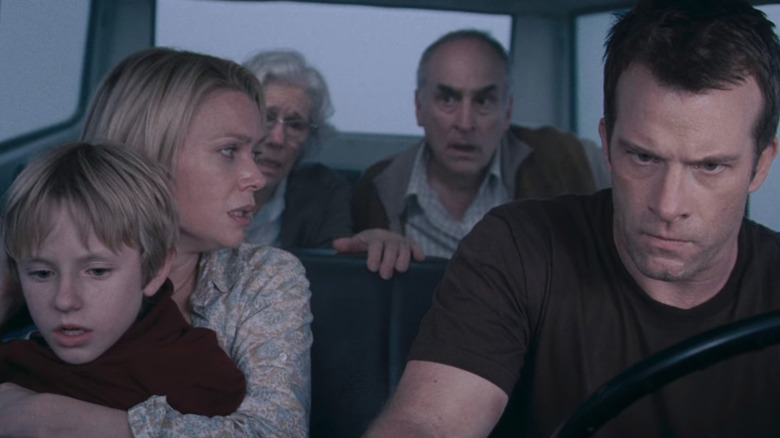
The ending to "The Mist" still hurts. After being trapped in an all-encompassing fog filled with giant Lovecraftian monsters, David Drayton (Thomas Jane) and the other survivors finally give up hope. David uses his gun's remaining bullets to kill his son and the other survivors. He steps out of his car to accept his demise, only for the mist to suddenly disperse. Turns out, the military's gotten the situation under control, and if David had waited 30 seconds, they all would've been perfectly safe. It seems that nearly every decision David's made has brought him further into the mist, making his situation worse than it needed to be.
If you're having trouble understanding how much this realization stung for poor David, imagine you're at a grocery store and there are only two checkout counters available. One of the lines to the checkout counters seems way shorter than the other, so you pick that one, only to watch helplessly as the longer line flies by while you're stuck waiting behind a single slow-moving customer who's paying entirely with coins. Well, Drayton's situation is basically that, only way, way worse.
The ending is the most famous thing about "The Mist," not in spite of but because of how delightfully mean it all is. Thomas Jane, however, isn't sure if they would've been able to get away with such a conclusion today. "I know [director] Frank Darabont was offered more money, like double the budget, if he'd have just changed the ending," he explained in a Daily Dead interview. "And we all said, 'No, we'll take less money.' [...] I don't know if you could get away with a 'Mist' today, it might be tough, but we snuck that one in and we're proud of it."
Why He Might Be Right
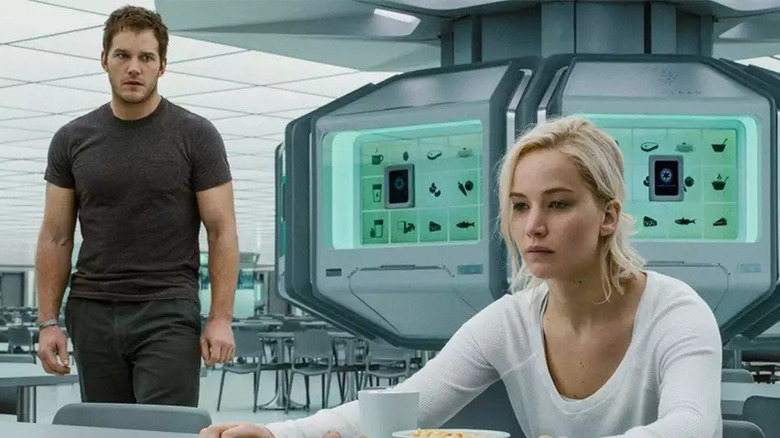
This isn't the first time this sort of claim has been made about a Frank Darabont movie. The director himself once speculated that "The Shawshank Redemption" couldn't have been made today either, albeit for slightly different reasons. His explanation for "Shawshank" centered around how slow and thoughtful the film was, whereas Jane's concerns about "The Mist" is more to do with the movie's downer ending.
The common wisdom, after all, is that audiences prefer happy endings. It's why everyone's still mad at "How I Met Your Mother" for going way darker than anyone expected with its finale, or maybe why the writers of "Scream 4" almost had the killer get away with it but were forced to rewrite the ending. It's why you may often find yourself watching a movie that feels like it's going in a dark, potentially traumatizing direction, only for it to finish off with an "everything's fine" final scene that doesn't feel earned.
The 2016 film "Passengers" is a famous example of this. As has been pointed out by many viewers, this could've easily been a horror story about Aurora (Jennifer Lawrence) being woken up on an empty spaceship with no one else but a stranger named Jim (Chris Pratt) and slowly figuring out that he's the one who doomed her in the first place. A "Twilight Zone"-style ending could've fit this story perfectly, but the movie chose a safe, generic happy ending instead. It makes sense, in a way: as a completely standalone original movie in a landscape of franchises and adaptations, "Passengers" was already a big risk. A bold, feel-bad ending could've been seen as pushing things too far.
Why He Might Be Wrong

But although the common wisdom seems to be that happy endings go down better with audiences, is that actually true? The popularity of shows like "Black Mirror" in the 2010s (and of course "The Twilight Zone" in the '60s) indicate that a lot of us viewers actually enjoy getting tortured by the things we watch.
Yes, both of those anthology shows threw in the occasional happy ending, but the most famous "Twilight Zone" episode is the one where that guy breaks his glasses right after the apocalypse finally gives him time to read. One of the most famous "Black Mirror" episodes similarly ends with a guy's consciousness being trapped inside a small room, forcing him to listen to the same song on a loop for a near-eternity.
Dark, twisted endings don't just happen on TV either. Films like "Ex Machina," "A Clockwork Orange," "Hereditary," and "Requiem For a Dream" are beloved and respected precisely because of how willing their endings are to not pull any punches. They've got the sort of conclusions that get people talking, that keep viewers thinking about the story years after it ended. As recently as 2022, "Smile" proved that a downer ending didn't mean a movie couldn't be a financial success.
Maybe from a studio's perspective beforehand, "The Mist" would've been a safer bet if it had stuck to the novel's more hopeful ending. But looking back at the iconic horror film's reputation over 15 years later, it seems Frank Darabont's meaner, soul-crushing ending was the better choice, even if you're of the mind that profit is all that matters.
Read this next: The 31 Scariest Movie Scenes Ever
The post Thomas Jane Questions If The Mist Could Keep The Same Controversial Ending Today appeared first on /Film.
You're Soaking Your Dishes Wrong

“Soaking the dishes” has become shorthand for “not actually doing the dishes,” and for the most part, that’s accurate. Lots of people assume soap works like a solvent, so if you just fill a crusty pot with soapy water, it’ll magically dissolve—and the longer you let it sit, the better. Plot twist: The solvent in a…
Tim Burton's Mars Attacks! Used The Past To Predict Our Present
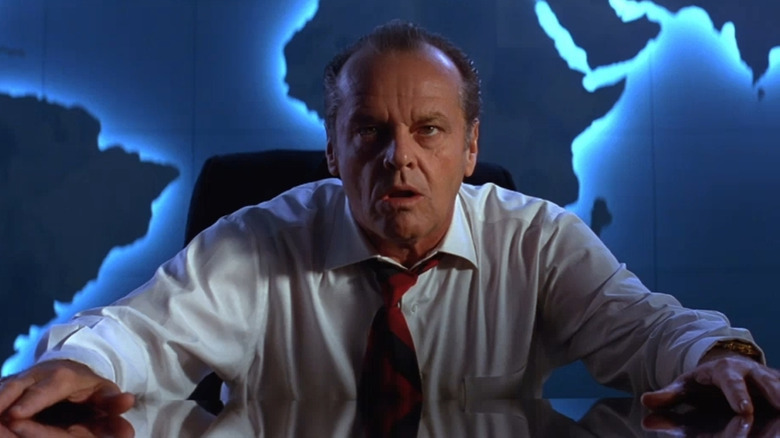
Things are getting weird out there — and that's saying something after the past few years. Somehow, humanity has survived an ongoing global pandemic, international warfare, the effects of climate change, and more, but now we're looking at a potential threat from beyond. After three different unidentified flying objects (UFOs) were shot down across North America, with varied reports on each and claims that some of them had technology beyond our current means, it was hard for many people not to immediately assume we were being invaded (or at least scouted) by aliens. While President Biden and top Air Force officials have since debunked these ideas with reports that the flying objects were made right here on Earth, people are still stirred up and thinking about the possibility of alien invasion, possibly more than they have in decades.
In 1996, two huge movies came out about alien invasions. One was Roland Emmerich's "Independence Day," an explosive crowd-pleaser about coming together as a species in the face of extinction; the other was Tim Burton's "Mars Attacks!," and it was exactly the opposite. If "Independence Day" is a patriotic and idealistic take on alien invasion, "Mars Attacks!" is the realistic reminder that humans can barely stop fighting one another long enough to realize they have a common enemy. "Mars Attacks!" was chided by critics and audiences at the time for being too cruel and too violent, with human protagonists that were too stupid, but in 2023, it feels all too timely.
A Blast From The Past
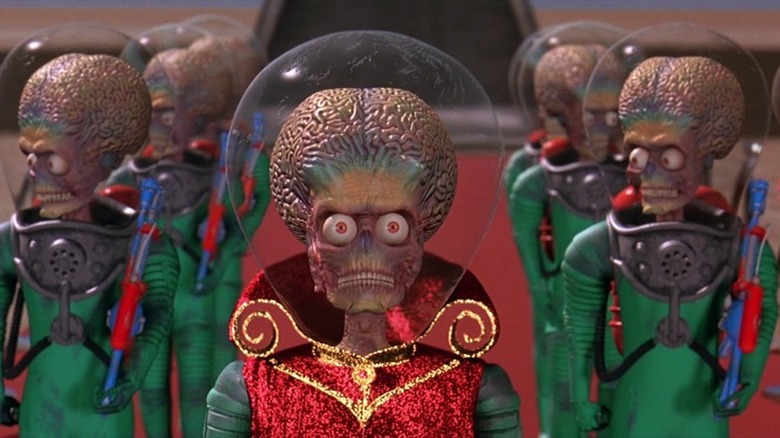
"Mars Attacks!" is one seriously strange movie. It's both inspired by a set of graphically violent collectible cards (think "Garbage Pail Kids" with disembowelment) and 1950s science fiction. While the alien invasion stories of the 1950s were unsubtle allegories for fears of communism, they were also pretty tame and followed the rules of the Hays Code, ensuring that "good morals" and such prevailed. The heroes would be heroic, the villains would be defeated, and America would look like the guardians of the world. "Mars Attacks!" is not that movie. This is a movie where an alien kills the president's dog and the First Lady (Glenn Close) throws the poor Golden Retriever's skull at the alien in self-defense.
"Mars Attacks!" is star-studded and lured in audiences with a cast that includes Pam Grier, Annette Benning, Jack Nicholson in a double role, Martin Short, Michael J. Fox, Danny DeVito, and even lounge singer Tom Jones as himself. Combined with a PG-13 rating and advertisements that played up the silliness of the Martians, it looked like a funny, slightly satirical take on something like "Independence Day." This was 1996, after all, and people were still living in a bubble of optimism that wouldn't be popped until just after the turn of the century. Burton's cynicism was far too much for audiences who thought the future was going to be bright, but in retrospect, he was just pointing out the inevitable truth that humans, even/especially the ones in power, can be exceptionally stupid.
Utter Incompetence In The Face Of Extinction
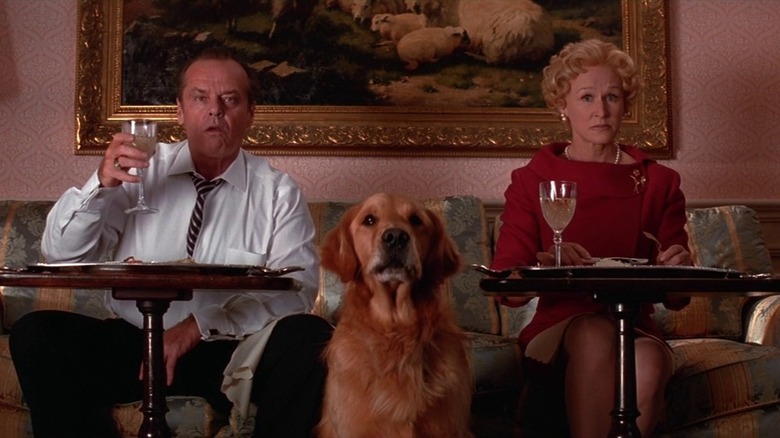
Pretty much everyone in a position of power in "Mars Attacks!" is a blowhard or an idiot (or both). The president (Jack Nicholson) is an old-school nationalist who enjoys the seat of his power and ignores his teenage daughter (Natalie Portman), while the First Lady is more concerned with the decorating decisions of Eleanor Roosevelt than anything else. By the time it comes down to just the Martian leader and the president to meet, Nicholson gives his best speech about how we should all just "get along," then is genuinely shocked when the alien kills him anyway. Members of the news media are too wrapped up in their appearance or their love lives to actually give a damn about the news, and the wealthy try to capitalize on the alien invasion with marketing schemes. Everyone either wants to get laid or make a quick buck and in the meantime, the Martians do some serious destruction.
There are a handful of survivors that manage to endure after the Martians destroy most of civilization, though it's mostly through sheer dumb luck because a teenager discovers that music makes their heads explode. While that might seem like a pretty harsh indictment of humanity, it's also worth pointing out that we haven't been able to unite to take care of any major problem, really. Even if the world's scientists team up to produce a vaccine to save millions of lives, some humans are going to refuse. Humanity's greatest threat to survival isn't an alien invasion, a pandemic, or even climate change: it's ourselves.
Looking Back To See How To Move Forward
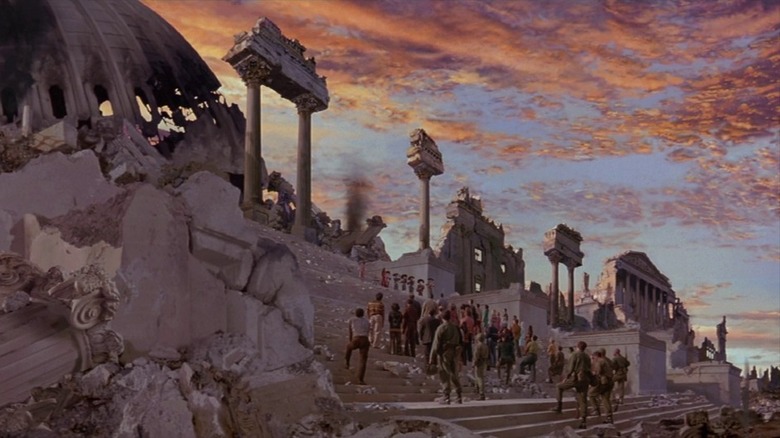
By the end of "Mars Attacks!", all of society has to be rebuilt. There's a slightly hopeful ending as some of the survivors discuss the future, but they shouldn't have to go through the struggle of rebuilding at all. The people in charge should have done their jobs and protected the interests of all of humanity, not just their voters or campaign donators. What we can take away from "Mars Attacks!" is that while many people like to idealize both the 1950s and the 1990s as idealized versions of the past where humanity was just somehow better, we weren't. As Simon Pegg's Gary King tells the alien invaders in "The World's End:" "Face it, we are the human race and we don't like being told what to do!" Humans are stubborn, petty, spiteful creatures, but we also can be better if we know that and still try anyway.
While many of us have lost our faith in institutions and are coming to realize that Burton was actually onto something in "Mars Attacks!," what's important is that we don't get defeated or let the stupidity win. We can rebuild before everything is destroyed by the weather, disease, or aliens, but we'll have to work together.
Read this next: Sci-Fi Movies That Made The Cast Do Gross Things
The post Tim Burton's Mars Attacks! Used the Past to Predict Our Present appeared first on /Film.
Rebel FM Episode 571 - 02/17/2023
OpenRA has another test release improving Dune 2000, Red Alert and major bug fixes
The first 2023 version of Morrowind Rebirth is available for download
Modder ‘trancemaster_1988’ has released the first 2023 version of Morrowind Rebirth. According to the modder, this new release packs a number of fixes, new additions, and various improvements. In case you weren’t aware, Morrowind Rebirth is a complete overhaul of Bethesda’s classic RPG. This mod adds countless new details, weapons, armors and much more for … Continue reading The first 2023 version of Morrowind Rebirth is available for download →
The post The first 2023 version of Morrowind Rebirth is available for download appeared first on DSOGaming.
Leaked benchmark shows Ryzen 9 7950X3D equal to 7950X in single-thread, slower in multi-thread
Two of AMD's new Ryzen 7000X3D V-Cache chips are due to launch on the 28th: the Ryzen 9 7900X3D and the Ryzen 9 7950X3D. As is tradition, someone with access to one of these chips pre-launch accidentally uploaded a Geekbench 5 benchmark result, with some interesting results. The 7950X3D showed only similar single-threaded performance as well as lower multi-threaded performance to the regular 7950X. Although this benchmark seems to reveal something we should be concerned about with Ryzen 7000X3D, it actually shows the kind of performance we'd expect.
The Dark True Story Behind Vincent Price's Witchfinder General, Matthew Hopkins
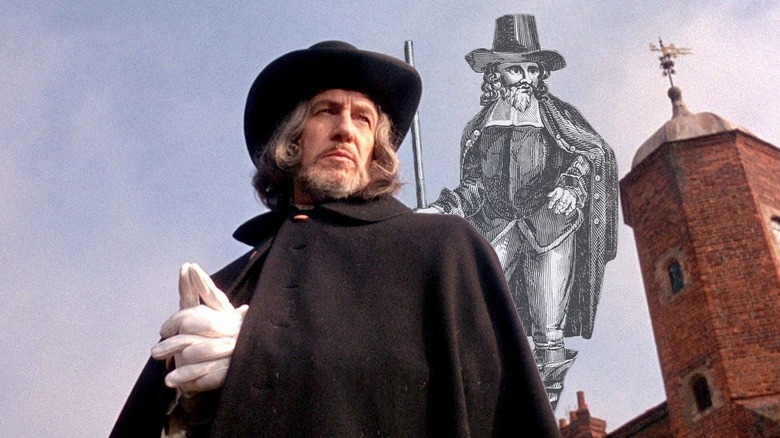
I grew up in Suffolk, UK, one of the old stamping grounds of Matthew Hopkins, the nefarious witch-hunter whose zealotry would one day be captured on screen by Vincent Price in the 1968 horror movie "Witchfinder General." As a fan of legends and lore, I once researched a piece on local witchcraft for my A-Levels, spending many an afternoon in the Suffolk Records Office. It was a delightfully eerie experience, sitting in a darkened room peering down the lens of a microfilm viewer at 300-year-old accounts of bewitchment, familiars, and curses.
One story still sticks in my mind. A witch took a dislike to a man in her village and sent an army of spiders to torment him. Eyewitnesses supposedly saw hundreds of the things swarming his house and weaving their webs. His frightened neighbors responded by burning the place down.
The thing that struck me most about these stories was the total credulity of the authors. There was rarely a sense that they ever queried the veracity of the tale, no matter how bizarre. This was a sign of the times, however, because everyday folk in the 17th century were deeply superstitious. Per Tudor Times:
The Kingdom of Darkness was as real to them as the Kingdom of Heaven, and ordinary people everywhere believed in devils, imps, fairies, goblins, and ghosts, as well as legendary creatures such as vampires, werewolves, and unicorns. Everyone feared evil portents, such as a hare crossing one's path or a picture falling from the wall.
Such an atmosphere of fear and superstition made rich pickings for Hopkins, who made a lucrative trade persecuting people accused of witchcraft. He became the subject of "Witchfinder General," a bleak period piece that is now one of the "Unholy Trinity" of folk horror alongside "The Blood on Satan's Claw" and "The Wicker Man." Let's take a look at real Hopkins and his place in the terrible history of witch-hunting.
So What Happens In Witchfinder General Again?
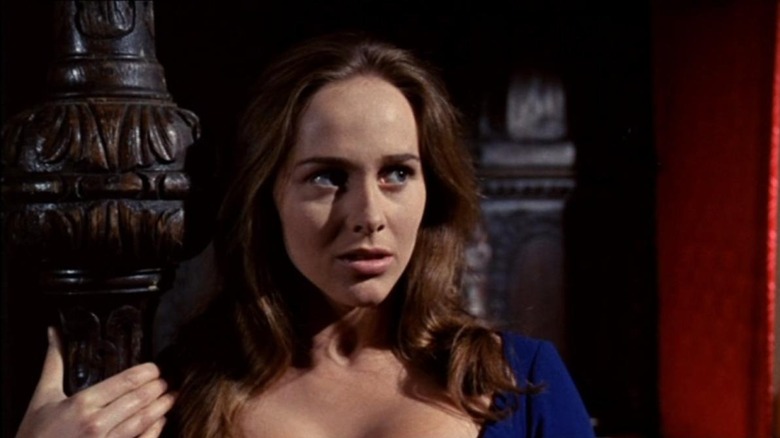
Like the other folk horror films of the Unholy Trinity, "Witchfinder General" sets scenes of horrific violence against a pastoral backdrop. In the opening scene, a man builds a gallows in an open field ready for a condemned witch as Vincent Price's Matthew Hopkins and his sadistic assistant John Steame (Robert Russell) look on. It is 1645, and the lawlessness of Civil War England provides ample opportunity for men like them to make good money witch-hunting. As the poor woman hangs, they head to their next payday in the small Suffolk village of Brandeston.
Young Roundhead soldier Richard Marshall (Ian Ogilvy) returns home to the village on leave to ask permission from the priest, John Lowes (Rupert Davies), to marry his niece Sara (Hilary Dwyer). The old man gives his consent, making Marshall promise he will take her somewhere safe as they have become outcasts in the community. Marshall happily agrees and rejoins his regiment.
In the meantime, Hopkins and Steame arrive in the village to investigate Lowes, who is accused of idolatry and witchcraft. They try to force a confession from him through torture, and Sara tries to save him by offering herself to Hopkins. She only manages to buy her uncle a brief reprieve in prison, however, as Hopkins changes his mind after Steame sexually assaults her. Lowes is hanged along with two women.
Marshall returns to Brandeston and vows revenge, setting him on a hellbent path that turns the upstanding young soldier into a vindictive man just as violent as his enemies. "Witchfinder General" is a stark and unsettling tale of corruption, greed, and abuse of authority; unlike its fictional counterparts in the Unholy Trinity, it derives its disturbing power from being based on real events.
The Start Of Britain's Deadly Witch-Hunting Craze
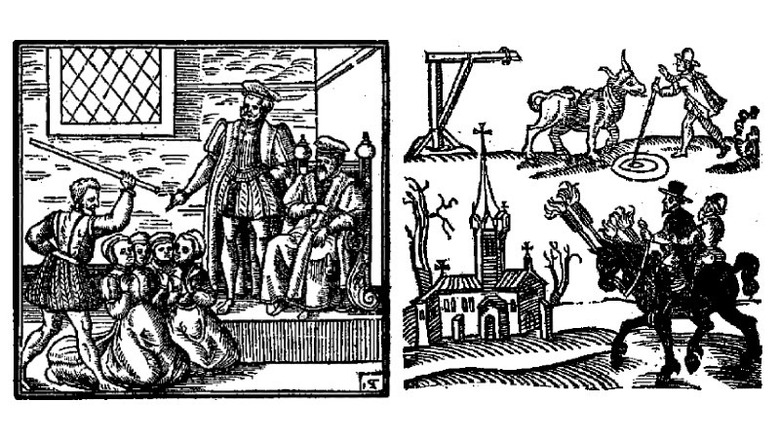
In September 1589, King James VI of Scotland set out across the North Sea to pick up his bride-to-be, Ann of Denmark, but his fleet was beset by a terrible storm and he was forced back. When he finally made it across calmer waters to marry Ann in Oslo, he heard superstitious rumors that the tempest was a witchcraft-fueled plot to kill him. Those tales inspired the King to undertake his own reign of terror in Scotland and England, starting with the people he suspected of bewitching his voyage.
He became obsessed with witchcraft and in 1597, he published "Daemonologie," a philosophical tract on witchcraft and necromancy that proved influential across Europe. When he took the English throne in 1603 to become King James I, he passed a Witchcraft Act in Parliament the following year. The statute introduced the severest punishment for acts of witchcraft, as demonstrated by the Pendle Trials of 1612 which resulted in ten members of the same family being hanged.
Witch hunts were especially deadly for women. Over 95% of people convicted as witches were female, and poor women who lived alone with animals, often outsiders, were the most vulnerable. No one was completely safe: Just one accusation was enough for a person to face trial and a huge majority of those accused were found guilty.
James's passion for witch-hunting waned in the years before his death in 1625, with a corresponding lull in activity around Britain. Fear and persecution of so-called witches returned again with a vengeance during the English Civil War (1642-1651) when the most infamous witch-hunter of them all made a very dubious name for himself.
The Real Matthew Hopkins
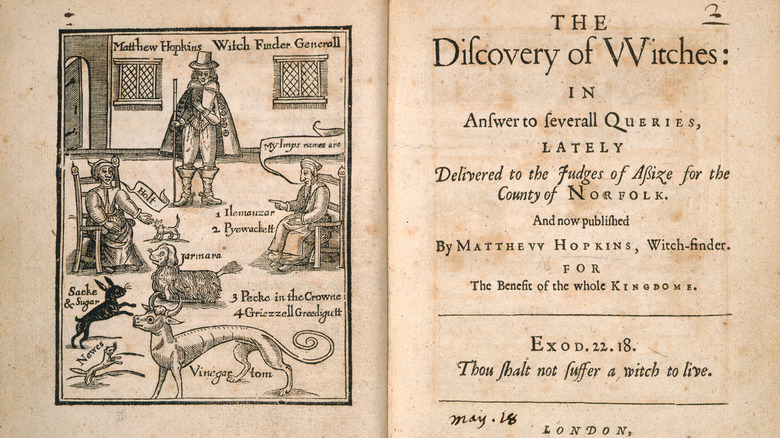
Born in Great Wenham in Suffolk sometime around 1620, Matthew Hopkins was much younger than Vincent Price's screen version. The horror icon was in his mid-50s when he took the role, while the real Hopkins was only in his 20s when he embarked on his witch-hunting spree. Fear of witches was rife in rural areas, and Hopkins took full advantage of the political and religious turmoil that accompanied the English Civil War, targeting communities that were only too willing to pay for his services.
Claiming to have a mandate from Parliament, Hopkins traveled around the counties of East Anglia with his sadistic cronies, torturing confessions from unfortunates accused of witchcraft. His favorite methods of identifying witches included pricking and "swimming." In the pricking test, the accused was poked or stabbed to see if they bled. If they didn't, it proved they were a witch. Since witch-hunting was a well-paid business, weapons with retractable blades were useful for eliminating any costly doubt.
The swimming test involved tying up the person and throwing them into a pond or a river to see if they would float. If they proved buoyant, it was a sign that they were in league with the Devil and execution soon followed. If the person sank they were in the clear, but many drowned before their tormentors could drag them from the water.
As a former lawyer, Hopkins made his breakthrough into witch-hunting in 1644 in Manningtree, Essex, when he supposedly heard a group of women discussing their meetings with the Devil. 23 were accused and 19 were hanged after the others died in prison. He spent the next three years prosecuting witches and appointed himself Witchfinder General in 1645. His single deadliest shift came in the same year in Bury St Edmunds, when 18 people were hanged in one day.
Witch-Hunting Made Matthew Hopkins A Wealthy Man
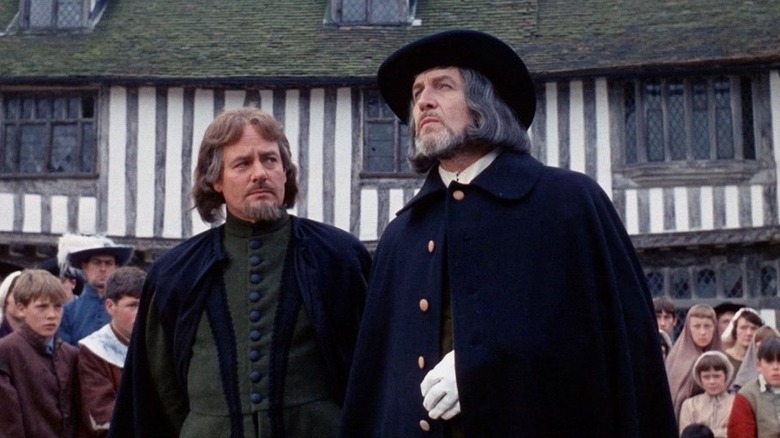
The witch-hunting activities of Matthew Hopkins made him very wealthy. At a time when a farm laborer was only paid around six pence a day, Hopkins racked up an estimated £1000 for his expertise. The coffer-keepers of Stowmarket paid him £23 for his services and my home town of Ipswich had to introduce a special tax to help cover the costs.
While women suffered the most from Hopkins' methods, men were not immune. One notable example was John Lowes of Brandeston, who provided the name of the priest in "Witchfinder General." Lowes was an elderly vicar who had served the area for around 50 years before falling foul of accusations. After several days of torture, he became "quite weary of his life, and scarce sensible of what he said or did." Before he was hanged he admitted keeping company with two imps, one of which sank a ship off the Suffolk coast on his behalf (per "The Lore of the Land").
Hopkins died in 1647 aged around 27, and persistent legend claims that he had his own methods turned against him when someone accused him of witchcraft. As poetic as that end would be, it is more likely he succumbed to tuberculosis. His three-year campaign of persecution was responsible for the deaths of over 300 people, and shortly before he passed away he published "The Discovery of Witches" detailing his exploits. It is possible that news of Hopkins' work crossed the Atlantic to the colonies in New England, as similar methods were used in witch hunts such as the Salem trials of 1692-93.
Witch-Hunts Around The World
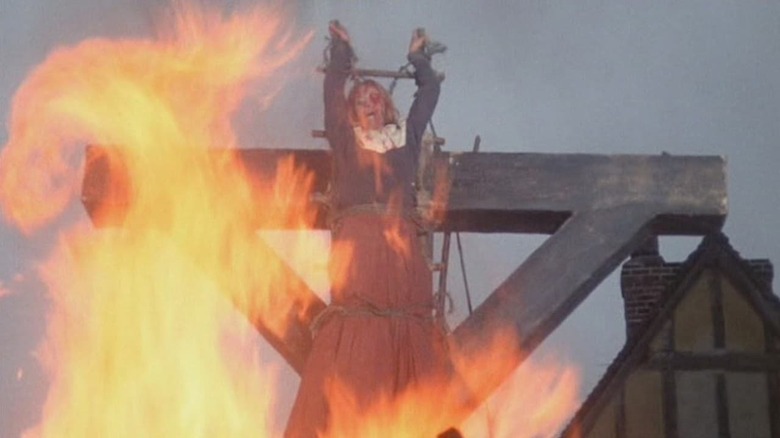
Systematic witch hunts were far from a solely British phenomenon, dating as far back as the 15th century in Europe. The first documented case began in 1428 in Valais, Switzerland, where 367 people were executed over a period of eight years. While some were beheaded, the usual method was burning by tying the victim to a ladder and dropping them into a fire, something we see in "Witchfinder General."
Over 100 years before King James published "Daemonologie," one of the most famous texts about witchcraft and witch-hunting was published. Inspired by the papal bull of 1484 that condemned the spread of witchcraft in Europe, two supposedly learned men from the universities of Cologne and Salzburg wrote "Malleus Maleficarum," aka "Hammer of Witches," which became the go-to handbook on witchcraft and how to combat it by the 1600s.
The persecution of alleged witches reached its peak in Europe during the 17th century. Germany was a particular hotspot, with an estimated 42 percent of trials resulting in execution taking place in the country. As in Britain, a period of religious and political volatility may have contributed to the rise in superstition and witch-hunting, such as during the Thirty Years War (1618-1648). The rise of science and the Enlightenment gradually put an end to the barbaric practice, but it took a long while to fully die out. The last known person executed for witchcraft in Europe was Barbara Zdunk in modern-day Poland as late as 1811. Figures vary, but it is estimated that up to 50,000 people, mostly women, died as a result of witch-hunts during the period 1450-1750.
Witch-Hunts On The Big Screen
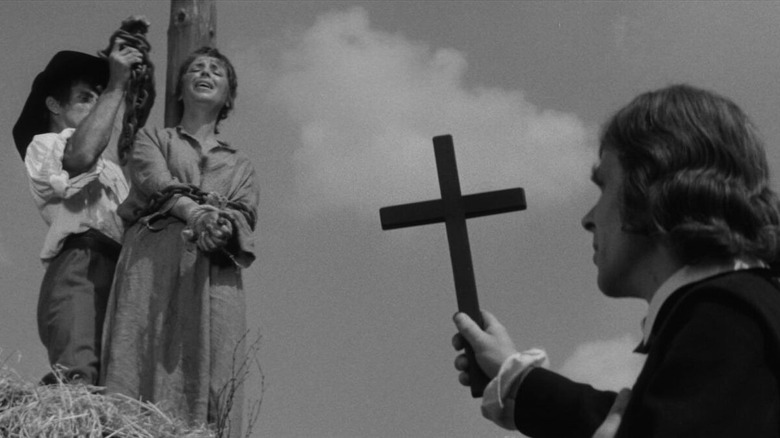
When "Witchfinder General" was released in 1968, it joined a wave of similarly-themed films from both Britain and abroad, including Ken Russell's controversial "The Devils," "Witchhammer" from Czechoslovakia, and "Belladonna of Sadness" from Japan. These movies corresponded with a rise in occult interests, stemming from counterculture movements of the '60s that rejected mainstream religion and kicked back against the establishment. As Piers Haggard, director of "The Blood on Satan's Claw," told Mark Gatiss in the TV series "A History of Horror:"
"We were all a bit interested in witchcraft. We were all a bit interested in free love. The rules of the cinema were changing and nudity became possible ... because the lid had slightly been taken off."
Witchcraft and witch-hunts have provided a rich source for films, books, plays, and other works of art. Perhaps because these stories often focus on finger-pointing, paranoia, persecution, and terror, they find relevance in any era; Arthur Miller wrote "The Crucible" in the '50s in response to McCarthyism, while Otakar Vavra's "Witchhammer" was an allegory for the Communist show trials in his country, to give just two examples.
Since the majority of witch-hunt victims were women, tales of witches are always useful when it comes to interrogating toxic masculinity. "The Witch" focuses on a young woman who rejects the oppressive patriarchy of puritanical society and signs up with the Devil. On the stage, Jodie Booth's "Sisterhood," about three women facing trial for witchcraft, performed at several sites connected with Matthew Hopkins during a "healing tour" of East Anglia in 2019.
Over 300 years later, Hopkins and his ilk remain as troubling and relevant as ever. As long as those in positions of authority victimize others for their own ends, they will always be with us.
Read this next: Horror Movies That Make Us Root For The Villain
The post The Dark True Story Behind Vincent Price's Witchfinder General, Matthew Hopkins appeared first on /Film.
Quentin Tarantino Shot Like Tony Scott For Pulp Fiction's Big Kahuna Burger Scene
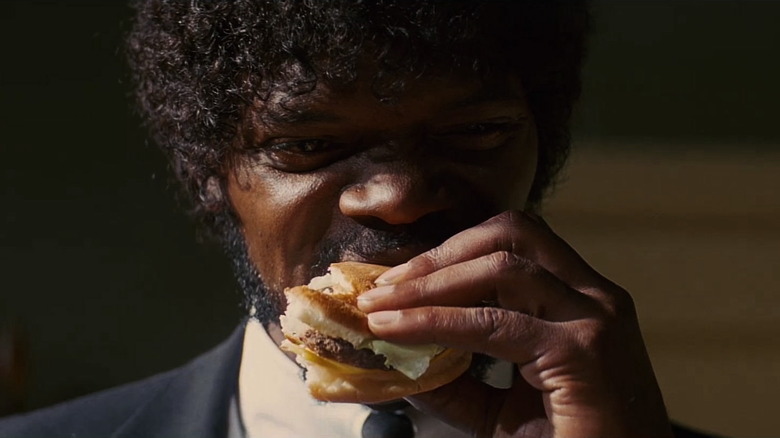
For over a decade, we have lived in an age of haywire film editing. This is most evident in action films, where it seems like there is a cut to a different shot every half-second. It's dizzying, nauseating, and just downright confusing. Thanks to digital editing tools, the ability to make more and more cuts has become exponentially easier, and filmmakers everywhere are utilizing it, even if it is to the detriment of their own work. Most people associate this kind of editing with a filmmaker like Michael Bay, but it is far more pervasive than just him. It's everywhere.
I believe one filmmaker weaponized frenetic editing to his advantage, and that is the late, great Tony Scott. In nearly all of his films, Scott created symphonies of chaos, from the swirling aerial combat of "Top Gun" to the relentless charging ahead of the train in "Unstoppable." It's as if for every scene he sets up one million cameras to shoot the action from every possible angle, and in the editing room, he isn't looking for something to make spatial or logical sense. He is just looking to emotionally charge the audience through his cuts. This is true for action set pieces, but it's equally applicable to simple dialogue scenes between two characters in a room. By giving them the same cutting pattern, he is giving everything the same dynamic intensity.
Stylistically, Quentin Tarantino doesn't share much in common with Tony Scott, even though Scott did direct Tarantino's "True Romance." Tarantino is a far more deliberate and patient filmmaker than Scott, using a lack of cuts to build tension instead of pummeling you with them. However, Tarantino did look to Scott's technique for one specific scene in "Pulp Fiction" and crafted arguably the best scene in the film.
'We're Popping All Around'
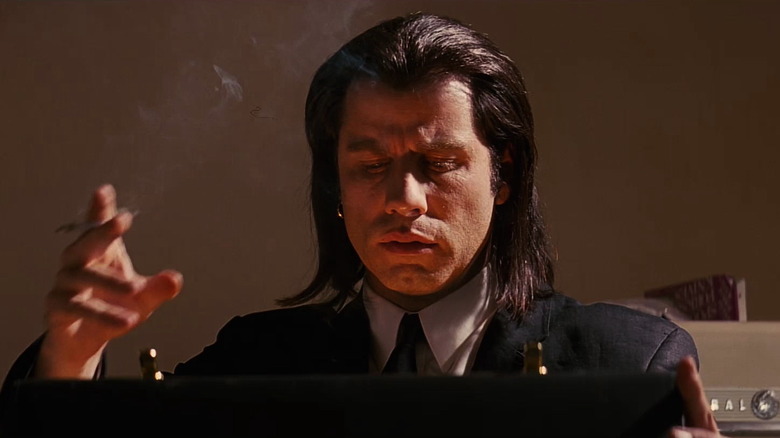
Whenever there's a scene featuring many different characters, it's always a challenge to keep things in order; it's easy to lose track of who's in the room, where they are, and how they are reacting to what's happening in the scene. Most of the scenes in "Pulp Fiction" are fairly isolated, but the scene in which Samuel L. Jackson's Jules and John Travolta's Vincent retrieve the glowing briefcase is more complicated. There are five characters in that scene, and even though two of them don't say much, their presence is still crucial.
In shooting this scene, Quentin Tarantino felt the Tony Scott approach was best for capturing everyone in the scene as Jackson delivered his "Ezekiel 25:17" monologue, even though that's not his preferred way of shooting. He said to Film Comment back in 1994:
"Me, I like to hold for as long as I can before I have to cut, and then when I do cut, I want it to f****** mean something. At the same time, I love how Tony does it. The whole sequence in 'Pulp Fiction' where Sam Jackson and John Travolta come to the yuppies' apartment is covered in that style, because I'm dealing with Sam's big monologue and I've got all these guys all over the room. We're popping all around."
Though almost no one is moving, the chaos present in that scene is palpable, and I don't think you would have felt that without the rapid cuts. You wouldn't completely understand the terror. Because of this technique, it makes the instances where he does hold on something — like Jules drinking the Sprite — all the more powerful. Tony Scott would only get more frenetic in the 21st Century, and I'd be curious to see Tarantino try and ape that evolution.
Read this next: 12 Awesome Action Movies That Never Got Sequels
The post Quentin Tarantino Shot Like Tony Scott For Pulp Fiction's Big Kahuna Burger Scene appeared first on /Film.
Discovery of 'Bond Villain' DNA Could Be a 'Gamechanger' for Cancer Treament
Read more of this story at Slashdot.
SpaceX offers $200 per month ‘global roaming’ internet service to Starlink waitlist clients
It appears SpaceX is preparing to offer global roaming. As first reported by PCMag, the company recently began emailing customers in countries where Starlink service isn’t available yet to invite them to try a new $200 per month package that allows its terminals to provide internet access “from almost anywhere on land in the world.”
NEWS: Starlink is testing a new "Global Roaming Service" for $200/mo, plus the standard $599 for Hardware. Will they offer this as an add-on for $65/mo like portability? @RealTeslaNorth@MarcusTuck3https://t.co/c2vQhtOUL8pic.twitter.com/kiLMsMkhDY
— Nathan Owens (@VirtuallyNathan) February 17, 2023
As The Verge notes, it’s not clear how SpaceX will follow through on the promise to provide internet from nearly anywhere. Despite the company’s growing constellation of small satellites, it’s still waiting to obtain regulatory approval to offer internet access in many key markets, including India and Pakistan. To that point, the email SpaceX sent out notes global roaming services are “contingent on regulatory approvals.” It adds customers may experience “brief periods of poor connectivity, or none at all” while it works to expand its satellite network. Potential customers should also be prepared to pay an import fee for their Starlink terminal, on top of the kit’s $599 price.
SpaceX already offers a few, more limited roaming options. Most notably, there’s the company’s Portability package for existing residential users, which allows those customers to use their Starlink terminal while traveling within their home continent. At $25 per month on top of the company’s $110 monthly subscription fee, the package is cheaper than the global roaming service SpaceX recently began emailing potential customers about, but the company requires those who spend “an extended period of time” away from home to change their permanent address.
12 Shows Like Billions You Definitely Need To See
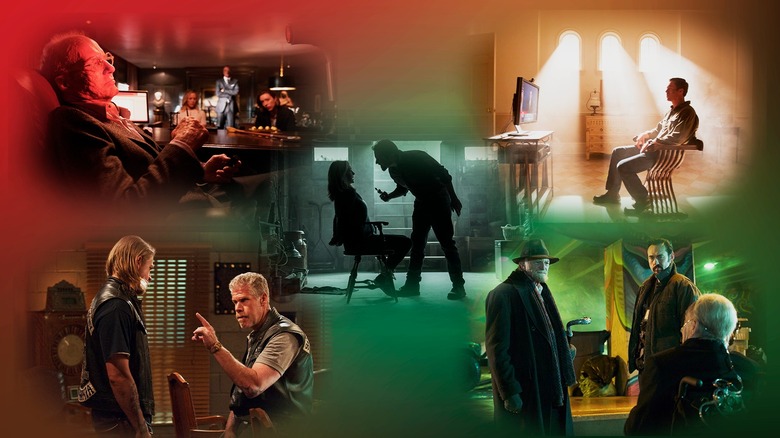
When it comes to dramatic storytelling, few shows do it better than Showtime's "Billions." Premiering in 2016, the series initially followed U.S. Attorney Chuck Rhoades (Paul Giamatti) and hedge fund CEO Bobby "Axe" Axelrod (Damian Lewis) in a cat-and-mouse game involving financial crimes, determined (and oft-corrupt) government officials, dysfunctional families, obsession, and tested loyalties. While taking some license to push the narrative and give each character a unique personality, "Billions" also highlights the real worlds of federal prosecutors and high finance. The first season and its two main characters were allegedly loosely inspired by the former U.S. Attorney for the Southern District of New York Preet Bharara's case against SAC Capital Advisors founder Steven Cohen for insider trading.
As The Wall Street Journal reports, depicting these complicated worlds as accurately as possible was important to "Billions" co-creators and writers Andrew Ross Sorkin, Brian Koppelman, and David Levien, who balance the show with truth along with embellishments (and humor) that keep the series fresh and characters endlessly engaging. The formula has proven successful throughout the series, and they know how to adapt to major changes — like co-lead Damian Lewis exiting after Season 5. If you're already caught up on "Billions" and are wondering where you should turn now to help scratch that very specific itch left in its wake, check out the shows below to find out what to watch next.
Homeland
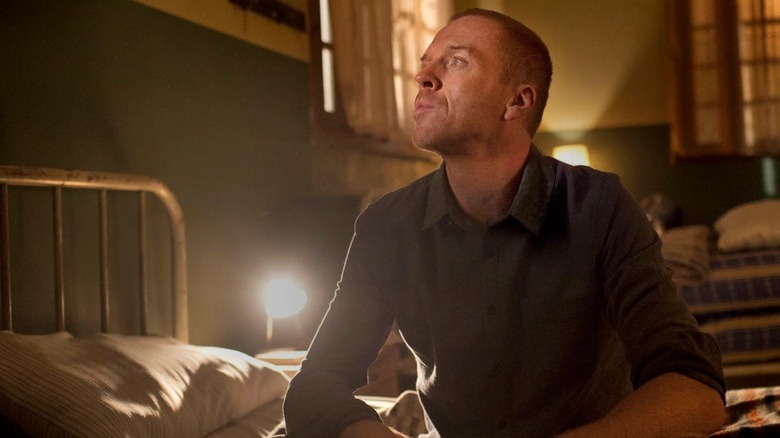
Bobby Axelrod is meant to be the rich guy you want to eat. Yet, through careful and clever writing, you'll find yourself cheering on the dirty millionaire who is as obsessed with beating Chuck Rhoades as the U.S. Attorney is to taking Axe down once and for all. Axe and Chuck are arguably two sides of the same coin. They're willing to break the rules to get what they want. Still, it's intriguing that Axe, in particular, is easy to back despite representing the worst of Wall Street. His charm, wit, and monologues will have you fist-pumping the air because Damian Lewis is an engaging performer.
While Lewis has many memorable scenes in "Billions," no role showcases the actor's range like his turn as Marine sergeant Nicholas Brody in "Homeland." Showtime's international thriller follows CIA officer Carrie Mathison (Claire Danes). In the show's first season, she's convinced Brody was turned by Al-Qaeda after being taken as a prisoner of war. During his three seasons, Lewis depicts a traumatized soldier and disconnected family man, not to mention an increasingly mysterious (and dangerous) character.
Once the truth is revealed, Lewis and the writers peel back the layers of Nicholas Brody even more, ultimately earning the actor an Emmy Award for his brilliant portrayal. If you were impressed with Lewis' performance as Bobby Axelrod, let him really blow you away with the talent he brings to "Homeland."
Sons Of Anarchy
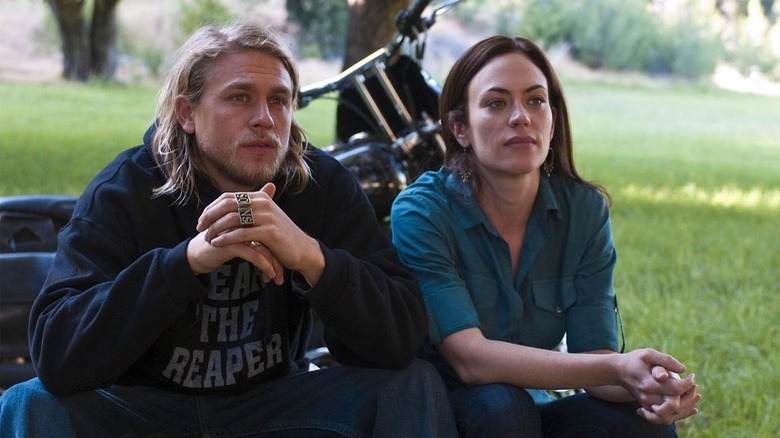
If you love Maggie Siff's portrayal of Axe Capital's psychiatrist (and Chuck's wife), Wendy Rhoades, on "Billions" (as you should), now is the time to revisit her gritty journey as Dr. Tara Knowles in Kurt Sutter's biker crime drama, "Sons of Anarchy." The characters share a couple of similarities, namely their intellect and resiliency, but playing Tara pushed Siff to dig deep into a very complex woman driven by love to become immersed in an extremely dangerous and violent world.
In "Sons of Anarchy," Tara falls back in love with outlaw Jax Teller (Charlie Hunnam), who is navigating life as the vice president of SAMCRO (Sons of Anarchy Motorcycle Club Redwood Original) and struggling with how to be a father while helping to lead a motorcycle gang. Jax was born into the life, but whether or not he wants his sons to follow in his footsteps is a driving force behind his and Tara's choices in the Emmy-nominated series.
Siff gets to play a fun part as the cunning Wendy in "Billions," an excellent hedge fund performance coach stuck in the middle of Chuck and Axe's battle of wills. As Tara, though, she shows off her true range as a formidable mother with some heavy baggage and a steel backbone. She's a big reason, one of many, to check out FX's "Sons of Anarchy."
The Strain
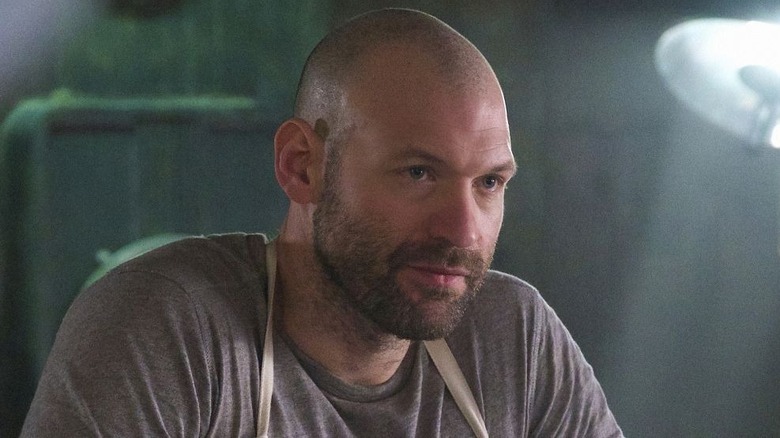
Damian Lewis' departing "Billions" at the end of the show's fifth season was a massive blow for fans. The minds behind the series knew they would have to find a formidable new foe for Chuck Rhoades — and a talented actor to play them. Luckily, they nabbed Corey Stoll as Mike Prince, who has taken over Axe Capital following Bobby Axelrod's decision to avoid prosecution by fleeing the country.
Stoll, a "House of Cards" Golden Globe nominee, is a star who fits in seamlessly in the show's excellent cast. Of his previous projects, our favorite is "The Strain," based on the book trilogy by Guillermo del Toro and Chuck Hogan, who also created the adaptation. Stoll stars as CDC doctor Ephraim Goodweather in this drama series that stands out from the rest of this list, as it heavily dabbles in the horror and fantasy genres.
"The Strain" is the ultimate vampire apocalypse tale, beginning with a plane full of dead people and a virus spreading across New York City. Ephraim, desperate to stop the outbreak and save his son while facing deep familial wounds, is only one member of humanity standing up against a seemingly unstoppable evil. It doesn't matter what genre in which Stoll stretches his acting muscles. The man knows how to steal every scene he's in. "The Strain" should be your first stop on the Corey Stoll train.
Dexter: New Blood
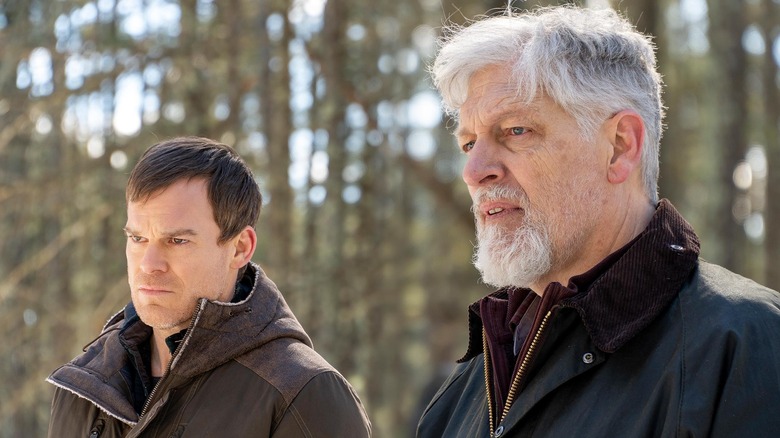
Continuing praise for a few notables on "Billions," Clancy Brown also deserves a section dedicated to his craft. "The Shawshank Redemption" actor portrayed Waylon "Jock" Jeffcoat, a corrupt U.S. Attorney General and a major thorn in Chuck's side, in the third and fourth seasons of the drama series. Brown is often typecast as an intimidating antagonist, putting his deep, full-bodied voice to good use as he fills every scene with his no-nonsense presence. These are the kind of roles he was born to play.
Brown has a long list of memorable roles, but if you want to stick with another recent cat-and-mouse drama that features him prominently, "Dexter: New Blood" is a good place to start. The "Dexter" revival picks up a decade after the controversial finale of the award-winning series starring Michael C. Hall. As he tries to keep his true identity a secret and grapples with having his now-teenaged son back in his life, Dexter faces off with Brown's Kurt Caldwell, a fellow serial murderer known as the Runaway Killer (with perhaps the best trophy room from either series).
Similar to Jock, Kurt believes himself to be untouchable because of his wealth and status, but both characters find out the hard way not to poke the wrong bear. To get the most out of "Dexter: New Blood," we recommend watching "Dexter" first. Yes, you'll be lengthening your binge-watch, but it's worth your time beyond getting your fill of Clancy Brown in the revival.
Succession
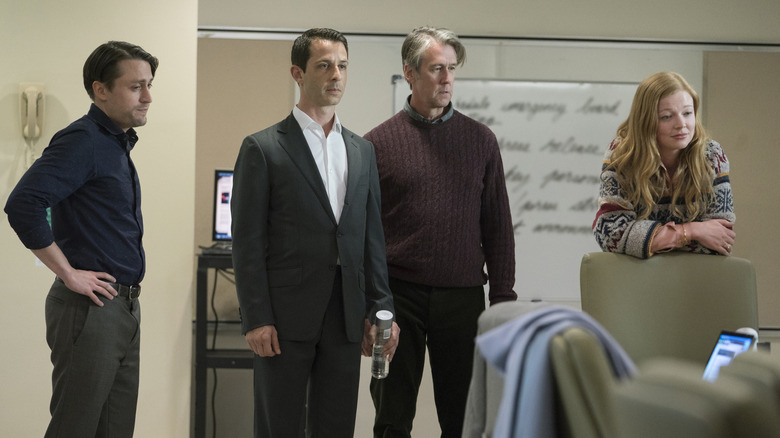
Few shows depict dysfunctional families like "Succession." As with "Billions," we get a glimpse of the ultra-rich and how wealth, power, and greed can serve as a catalyst for destruction. While the Roys in Jesse Armstrong's "Succession" are the better example of how ridiculous amounts of money can disrupt the warm side of family, there are moments in "Billions" when we see how Axe's obsession with wealth and winning, and Chuck's obsession with besting Axe and taking him down, takes a toll on their wives and kids. In later seasons, each couple is divorced, and their children barely appear in their lives.
Beyond complicated family dynamics, "Billions" fans will get their fill of being on the inside of these characters' lifestyles and the business dealings that keep the Roy family's media and entertainment company afloat through several scandals. "Succession" and "Billions" are penned by clever writers who know how to balance profound drama with plenty of humor and sharp dialogue, which is necessary to digest the story. If you're missing shocking betrayals, intense rivalries, and massive egos, now is the time to start following the Roy family's tale.
Suits
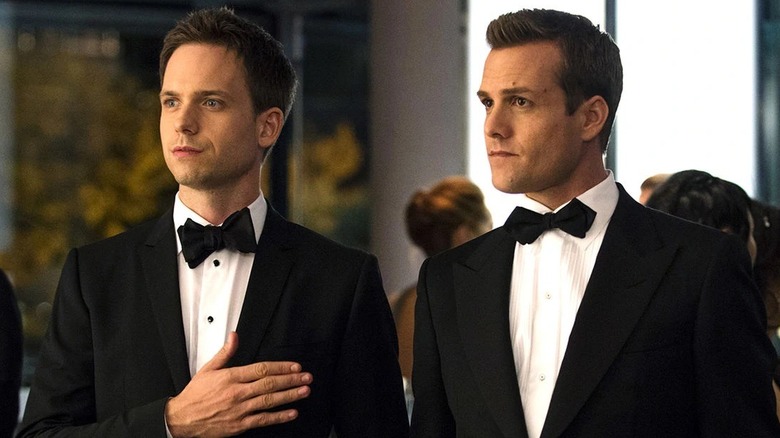
As with "Billions," even the characters we assume to be the most squeaky clean are not always on the up and up. And, if we're being honest, that is partly what makes "Suits" so entertaining. Harvey Specter (Gabriel Macht) and his protege Mike Ross (Patrick J. Adams) are the guys to root for as they go against formidable lawyers and clients. Still, they bend (and break) the rules more than once during the show's nine seasons.
The cat-and-mouse games Mike and Harvey play against opposing attorneys as they take on new cases are as fun to watch as Chuck vs. Axe (or Mike Prince). Every player on the board is smart, quick-witted, and stubborn, leading to some epic wins and losses. "Suits" never gets quite as dark as "Billions," leaning into a lighter dramatic-comedic tone, which helps its heavier narratives take the audience by surprise when they dive into those themes. If you want to watch another legal drama with sharp writing and memorable characters, "Suits" is an excellent addition to your watchlist.
Goliath
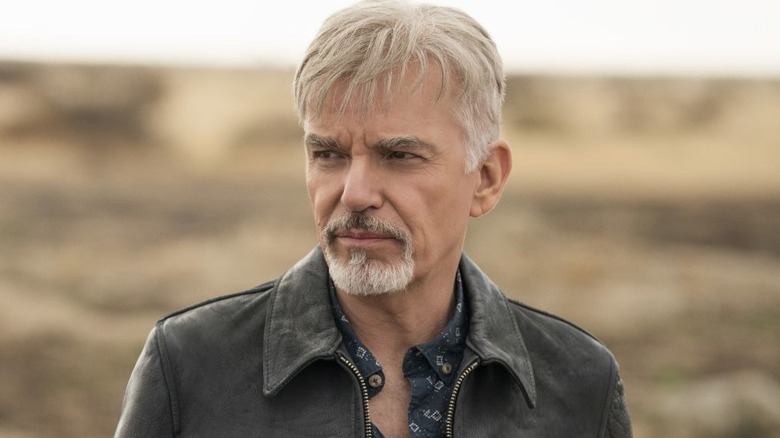
If you're still riding that legal drama wave and want to watch more dysfunctional lawyers go to war, look no further than Prime Video's "Goliath." Playing disgraced attorney Billy McBride, Billy Bob Thornton earned a well-deserved Golden Globe in 2017, and his character is easy to root for. Perfectly imperfect, McBride is a messy work-in-progress who fights for what's right with a little help from his ragtag group of friends and colleagues.
In "Billions," the battle between amoral U.S. attorneys and sketchy hedge fund managers becomes personal and, arguably, selfish to the point that lines are blurred, and many innocent people become collateral damage. McBride might be out for revenge against his former firm when the series begins, but his intentions are largely as pure as you would want them to be if he were in your corner (and you can trust that this is the guy you want in your corner). Co-created by multi-Emmy winner David E. Kelley ("Big Little Lies," "Ally McBeal"), "Goliath" delivers compelling performances, memorable characters, and cases against a few powerful opponents that give Billy a run for his money.
Ray Donovan
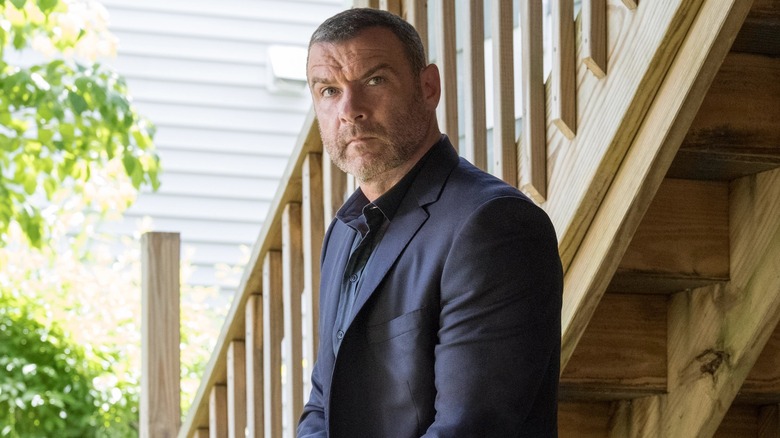
Shifting away from legal dramas and peeling back the dangerous world of Hollywood crimes, fixers, and traumatized Boston transplants, "Ray Donovan" is less about eating the rich and more about using their secrets to make a living. No one's better at the job than Ray (Liev Schreiber), whose chaotic life balancing fixing famous and wealthy people's problems with his own family's mayhem will constantly leave you begging for this incredibly flawed man to get one good night's sleep.
As previously mentioned, "Billions" dabbles in family dysfunction. It's the root of the story in "Ray Donovan." Expanding on troubled marriages and complicated (to put it lightly) parent-child relationships, the award-winning series is brutal, funny, and heartbreaking. Grittier than "Billions" but still taking a hard look into the dangerous world of greed and fame, "Ray Donovan" doesn't shy away from how money and violence (along with ignored generational trauma) can only lead to destruction. Guys like Ray and Bobby Axelrod may have been on different paths, but they rarely get traditional happy endings.
Your Honor
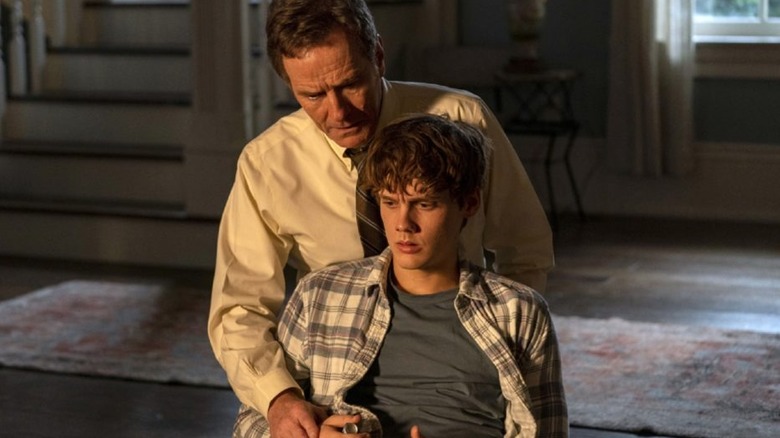
You can never go wrong with "Breaking Bad" star and Oscar nominee Bryan Cranston, who now plays Judge Michael Desiato in Showtime's crime drama thriller "Your Honor." The first season introduces us to Michael as a moral and fair judge and a widowed father to his teenage son, Adam (Hunter Doohan). Everything changes when Adam is involved in a hit-and-run accident that leaves another teenager dead. Adam, haunted by the terrible event, convinces his dad he needs to turn himself in. But everything changes when Michael discovers the dead boy is the son of mob boss Jimmy Baxter (Michael Stuhlbarg), who is determined to discover the identity of his son's killer and make sure they never make it to trial.
In "Billions," U.S. Attorney Chuck Roades is willing to compromise his morals in the name of taking down the corrupt ultra-rich and powerful, first Bobby Axelrod and later Mike Prince. His obsessive determination to beat them and walk away victorious doesn't quite compare with Judge Desiato's desperation to keep his son (and all that's left of his family) alive and safe from a vengeful crime lord and his equally vicious wife. These are men, fathers, who have sworn to uphold the law and the Constitution, but one is breaking the law for the "right" reasons, and the other crosses the line for what could be a noble cause — if he wasn't so self-righteous about the whole thing.
Better Call Saul
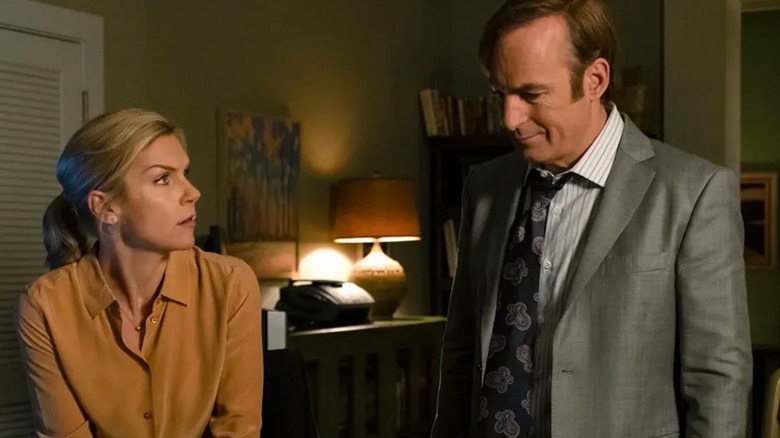
"Breaking Bad" creator Vince Gilligan was a bold genius when he announced an ambitious prequel to the hit series starring Bob Odenkirk. "Better Call Saul" mostly takes place before the era of Walter White (Bryan Cranston) and Jesse Pinkman (Aaron Paul) and follows the origins of Jimmy McGill turned Saul Goodman. The show explores how he became the dirty attorney we know while offering glimpses into post-"Breaking Bad" events.
"Better Call Saul" follows the theme of people meant to adhere to the letter of the law but find themselves breaking the rules (or completely obliterating them). Chuck Rhoades doesn't hold a candle to Jimmy McGill. As he slowly transforms into Saul Goodman, Jimmy's story is tragic. His initial path is that of a man wanting to be better and do things the right way, only to be thwarted at every turn — many times by his brother. Jimmy's descent into his old grifter alias, Saul, eventually creates a domino effect that draws in and nearly destroys the love of his life, Kim (played by the ineffable Rhea Seehorn). "Better Call Saul" is far darker than "Billions," but both shows depict the consequences of a single choice or action and what it costs to set things right.
Ozark
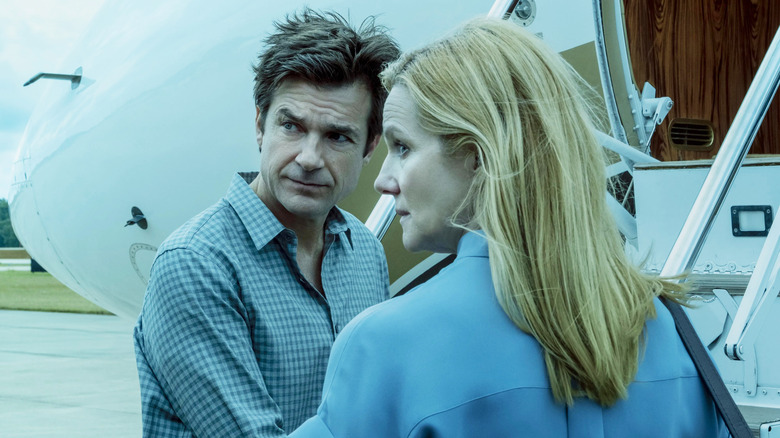
From the dark recesses of the Missouri Ozarks, our next entry is another series themed around family and unabashed greed. While "Billions" strictly exists in the world of white-collar crime and the ridiculously wealthy, "Ozark" offers a mix of worlds colliding thanks to money launderer Marty Byrde (Jason Bateman) and his family. There are mobs, drug cartels, even more dirty politicians, backwoods drug dealers, and enough family drama to last a lifetime.
Aside from riches and staying on top, what Axe feels he is fighting for in "Billions" are survival and identity. That's what money and power mean to him. Who is he without it? In "Ozark," Marty and his family's fight is for survival in the mortal sense. As time goes by, the series reveals that Marty's wife, Wendy (Laura Linney), is the ruthless one, more fitted for manipulation and killing to get what she wants. Before they split, Axe's wife, Lara (Malin Akerman), is willing to cross any line to ensure their success. Lara eventually leaves Axe, but she and Wendy prove to be the true backbones of their husbands' operations. It's fun to imagine what it would be like to see those two steely women go head-to-head with Wendy Byrde.
Dopesick
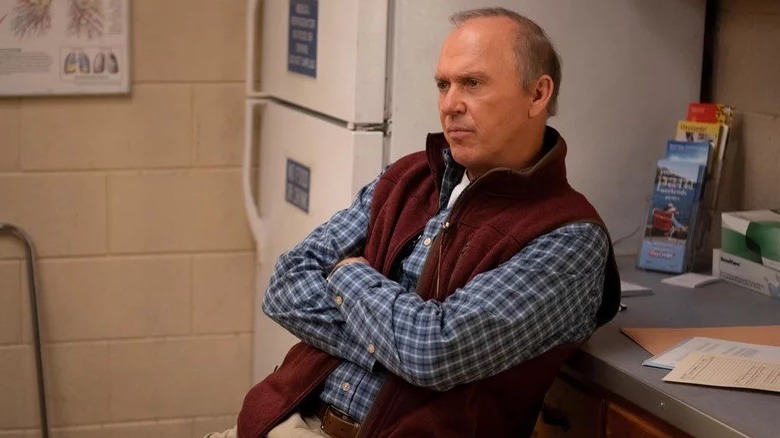
"Dopesick," created by Emmy-winning "Game Change" writer Danny Strong, tells the story of the opioid crisis' origins through the perspective of those who caused it, the people who tried to bring them to justice and stop the rampant spread, and representations of some of the patients and others who suffered horrifically. "Billions" remains a largely lighthearted show, avoiding stepping into really dark, dramatic territory, but it doesn't shy away from mentioning when hedge funds like Axe Capital have destroyed a business or affected workers (a reality labor advocates have wanted to address, according to People's World).
The "little guy" often gets screwed over in the name of the rich becoming unnecessarily wealthier. The same thing happened when Purdue Pharma manufactured OxyContin and participated in criminal mislabeling of the drug, making false claims about its addictive nature. "Dopesick" documents and dramatizes key details the public may not have been aware of or entirely understood about the role Purdue Pharma president Richard Sackler and his family played in the drug's misbranding. Beyond the battle between the Sacklers and lawmakers, the series also sheds an empathetic light on addiction that hopefully drills into audiences a new outlook on how we treat those suffering from this mental health disorder. The contexts may be different, and Chuck's methods in "Billions" are not always the most admirable, but both shows provide reasons why the powerful who hurt others with their wealth and greed need to be stopped.
If you or anyone you know needs help with addiction issues, help is available. Visit the Substance Abuse and Mental Health Services Administration website or contact SAMHSA's National Helpline at 1-800-662-HELP (4357).
Read this next: The 18 Best Crime Dramas In TV History
The post 12 Shows Like Billions You Definitely Need to See appeared first on /Film.
The Unrated Movie That Ari Aster 'Regretted Watching' And Helped Inspire Hereditary
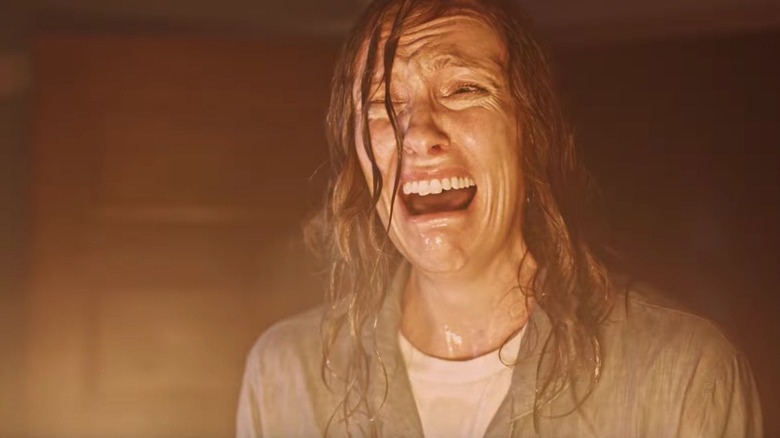
This post contains spoilers for "Hereditary" and "The Cook, the Thief, His Wife, and Her Lover."
Ari Aster became a big name in horror in 2018 with "Hereditary," but he'd had some practice at upsetting audiences by that point. All the way back in 2011, he caused a stir with his short film "The Strange Thing About The Johnsons," which focuses on a boy who sexually abuses his father over the course of his life. Aster said the film came from "an idea that sprouted between [him] and a few friends" about "taboos that weren't even taboos because they were so unfathomable." The short formed his thesis while studying at the American Film Institute's graduate school, and has since become infamous online as one of those films people claim they wish they never saw.
Aster brought that penchant for exploring deeply disturbing subject matter to "Hereditary," his first feature film (as well as its follow-up, "Midsommar"). Depicting the disintegration of a family besieged by a demon and his evil cult, "Hereditary" also deals with themes of loss and grief, and contains multiple scenes that, while they might not be as taboo as anything in "The Johnsons," have a tendency to linger in the mind just as much. That's a testament to the filmmaking talent that went into crafting "Hereditary," which so clearly draws stylistically from directors such as Nicolas Roeg and Stanley Kubrick.
Aster has often cited those filmmakers as big inspirations, especially Roeg, whose 1973 Giallo "Don't Look Now" shares a "spiritual" connection to "Hereditary," according to the director. But there's one movie that isn't mentioned as often in the discussion on Aster's influences — one that contains enough of its own unfathomable taboos that it was unrated upon its release.
Peter Greenaway's Obscene Elegance
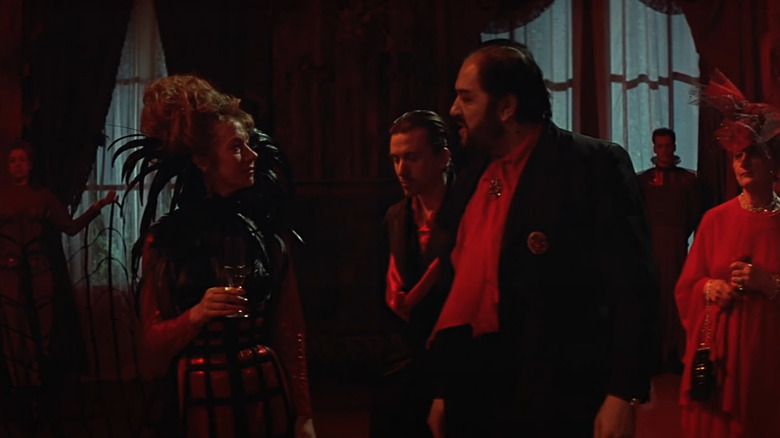
Peter Greenaway is lesser known than Ari Aster, and even Nicolas Roeg, but is just as interesting a filmmaker. The British director started out as a painter before branching out into film and has since made dozens of movies, his most successful (and a great food movie) being 1989's "The Cook, the Thief, His Wife, and Her Lover."
The film follows brutish London gangster Spica (Michael Gambon), who buys a fancy French restaurant only to abuse the staff and patrons, eventually being murdered by his own wife (Helen Mirren). Throughout, Greenaway employs his painting expertise to create a vivid mise en scène for every frame, arranging characters as though they were elements of a renaissance painting and using shifting colors to represent emotional undertones — all captured expertly by cinematographer Sacha Vierny. Greenaway's frames are meticulously constructed tableaus, often explored by way of tracking shots that reveal symbols and visual clues as to what will happen as the film progresses.
However, the subject matter and content of "The Cook, the Thief, His Wife, and Her Lover" often doesn't match the elegance of Greenaway's painterly approach. The film includes everything from violence against women, child abuse, torture, and even cannibalism. As a result, Greenaway ran afoul of the MPA, which threatened to give it an "X" rating, before ultimately bestowing upon it the questionable "Unrated" label.
Given the graphic nature of the movie, it's not difficult to see why the MPA was concerned. But this wasn't some gross-out gore-fest — there was undeniable artistic merit to Greenaway's film. Even Roger Ebert admitted that while "The Cook, the Thief, His Wife, and Her Lover" had "disturbed" him, it also "really touched [him] — in a way few films have." And it wasn't just him that felt that way.
Aster Regretted Watching Greenaway's Film
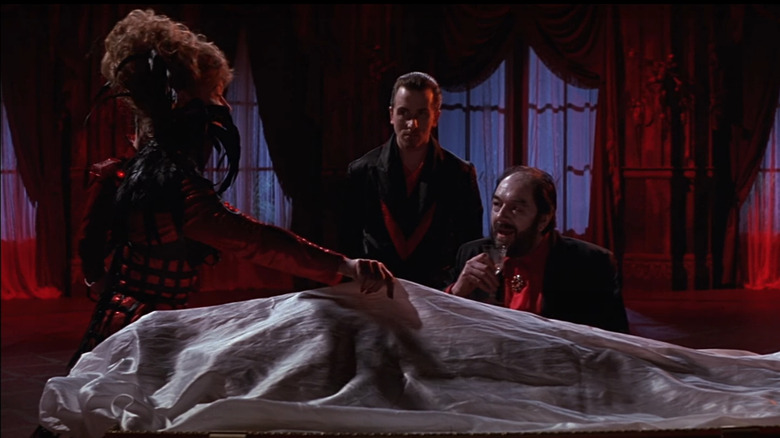
In New Mexico, almost 10 years after "The Cook" debuted, a 12-year-old Ari Aster began developing his taste in filmmaking by absorbing as many movies as he could. It was around that age he saw "Goodfellas" for the first time, and as he once told Filmmaker Magazine, "became very aware of somebody who isn't on screen who is orchestrating the experience." That was the genesis of his ambition to become a director, and happened to coincide with him seeing Peter Greenaway's 1989 crime drama.
As he explained to CineFix in 2018 (via IndieWire), Aster was intrigued by "The Cook, The Thief, His Wife, and Her Lover" after his father saw it and was, much like Roger Ebert, seemingly deeply affected by it. After getting ahold of a copy of it from his local video store, Aster became similarly haunted by its imagery and cited it as being influential, particularly when crafting "Hereditary":
"I regretted watching it for many years. There's something so upsetting to me about the level of artifice in this film, from Sacha Vierny's cinematography to Jean-Paul Gaultier's costumes. What you're left with is Greenaway's wholesale disgust with the human race."
That "disgust for the human race" seemed to strike a peverse chord with Aster, whose films at times feel as though they too harbor some vague misanthropy. What's more, his deciding to become a director and witnessing Greenaway's film around the same time seemed, much like the many symbols that would later appear in Aster's films, to foreshadow the filmmaker's future in the industry as a director with a knack for creating deeply unsettling movies. We're expecting more of that with his next project, based on the trailer for "Beau Is Afraid."
The Heavy Influences In Hereditary
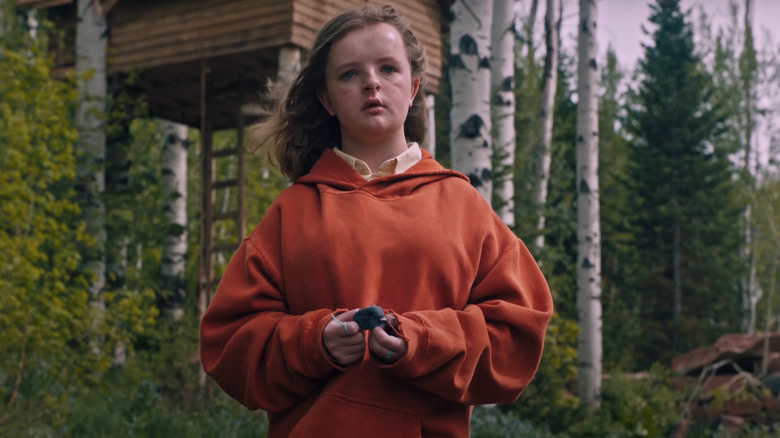
"Hereditary" showcases its influences throughout, sometimes to the point where the film almost drifts into derivative territory. That's not to say it ever undermines its haunting atmosphere. The movie absolutely stands on its own as a singular work. But it is undeniably indebted to movies such as "Carrie," "Don't Look Now," and "Rosemary's Baby," the last of which directly led to Aster's inclusion of the demon Paimon. Indeed, there are scenes that directly mimic key moments from all those movies.
When Charlie Graham (Milly Shapiro) goes wandering in the backyard, Aster chose to have her wear an orange hoodie while walking through the greenery, in an homage to the opening of "Don't Look Now." Nicolas Roeg's film begins with Christine (Sharon Williams), the daughter of John (Donald Sutherland) and Laura Baxter (Julie Christie), playing in the grounds of her English country home in a deep orange jacket, before she drowns in a pond on the property. Aster has revealed that he views Roeg's film as the most influential on "Hereditary," so the direct homage to the horrific prologue of "Don't Look Now" makes sense. But Peter Greenaway's influence is arguably just as strong, only more subtly expressed. There might not be any direct visual mimicry of "The Cook" in "Hereditary," but Aster undeniably uses many of the techniques Greenway is known for, as well as establishing a very similar tone.
Color And Symbolism
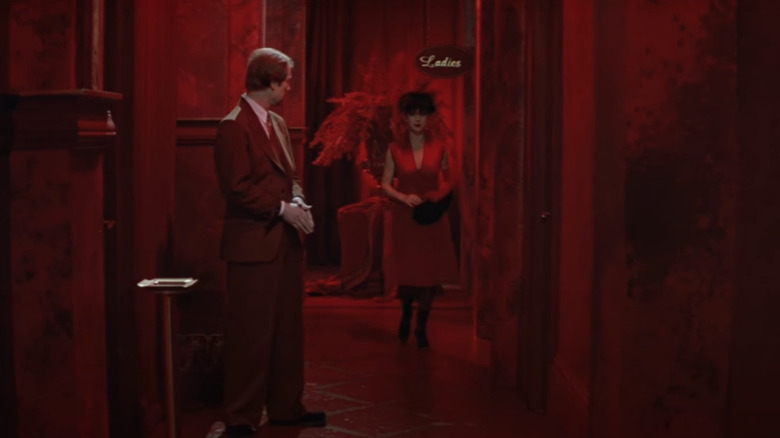
Peter Greenaway's background in painting gave him a firm belief that the visual element of filmmaking was all-important — above any writing or script considerations. That meant his films were consistently filled with symbolism and visual signposting. For example, throughout "The Cook, The Thief, His Wife, and Her Lover," when characters walk between areas of the restaurant, their clothes change color with the help of lighting trickery. Greenaway explained the technique to BAFTA back in 2016:
"The whole film is based on seven colors. The kitchen is green because that's the jungle where all the food came from. The restaurant is red because it represents meat-eating and cannibalism and so on and so on. [...] And just to make people very, very self-conscious that we were playing with colors here, Helen Mirren when she walked through a door, she changed color like a chameleon with the circumstances in the scenario. So that was that was a really interesting idea to pursue."
Mirren, whose role in Greenaway's film came long before she gained international star status, was obviously well aware of what the director was doing here, and shares Ari Aster's perception of the film as having such a pronounced "level of artifice." She told Roger Ebert: "The movie's clearly artificial, for example. My costume changes color according to the different locations — red in the dining room, green in the kitchen, white in the toilet. It's crazily artificial."
For Mirren, the artifice was emblematic of "The Cook" being an artistic work and not just an excuse for body horror and depravity. But for Aster, that artifice was crucial to establishing such a deeply disturbing atmosphere.
Aster Wants To Make You Regret Watching His Films
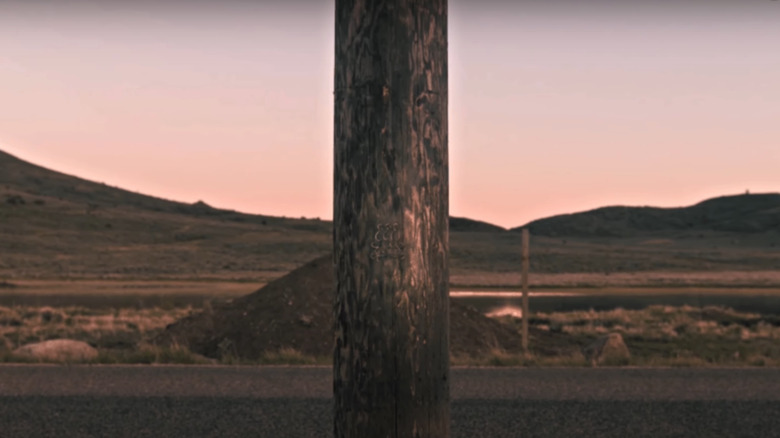
In "Hereditary," color doesn't play as crucial a role as in "The Cook," but is important. The blue and orange color grade is widespread in film generally, but here Ari Aster uses it to his advantage. He emphasizes orange not only through Charlie's hoodie in the aforementioned "Don't Look Now" homage, but as a way of representing the great evil behind the family's misfortunes. In a Reddit AMA, the director was asked about the significance of the color teal, saying, "No significance beyond wanting cohesion, although many colors are tied thematically/conceptually. (Charlie and Paimon are pretty orange/amber if you ask me.) Color is important!"
Although color was important, it clearly wasn't as big a consideration for Aster as it was for Peter Greenaway. But the principle of visual signposting and symbolism was. Aside from the two movies sharing a sense of unease that curdles into dread as the stories play out, Aster's film makes heavy use of symbolism — both literally and metaphorically. The recurring sigil — a symbol representing the demon Paimon — can be seen multiple times throughout "Hereditary," usually portending some calamitous event like when it's seen carved in the telephone pole that eventually decapitates Charlie. And then there's the dollhouse metaphor in "Hereditary" which emphasizes the characters' lack of agency.
But putting aside symbolism and visual techniques, more than anything, it seems as though Aster was struck by the way Greenaway's film disturbed him for so long after he saw it. His experience of having "regretted watching it for many years" clearly carried over to not only "Hereditary" but his short film work, particularly "The Strange Thing About The Johnsons" -- which, if Twitter and Reddit are any gauge, has made many a viewer regret having ever laid eyes on it.
Read this next: Horror Movies That Even Horror Fans Could Hardly Finish
The post The Unrated Movie That Ari Aster 'Regretted Watching' And Helped Inspire Hereditary appeared first on /Film.
Meg Ryan Returning For Top Gun: Maverick Was Never On The Table
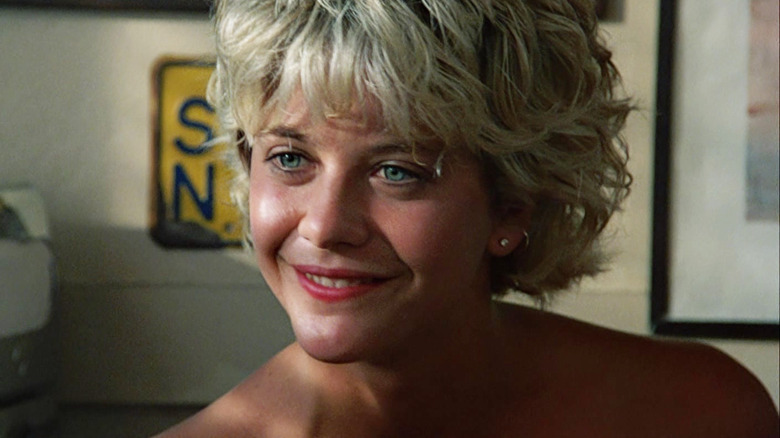
Nostalgia is a hell of a feeling, and if there's one thing we've learned over the years, it's that it sells. Just look at the wild success of "Stranger Things" or "Star Wars: The Force Awakens." You can go back even further to a TV show like "The Wonder Years" and, before that, "Happy Days." As if we needed any more evidence that people love feeling nostalgic, though, all you need to do is look at what a phenomenon "Top Gun: Maverick" became in 2022. It earned the top spot at the box office with a gross of nearly $1.5 billion (prior to the arrival of a certain James Cameron sequel, that is), and beyond that, it was also critically lauded and even snagged a nomination for Best Picture at the 95th Academy Awards.
There's just something about seeing old characters and references that audiences love. It gives us comfort. But that's why it's a little surprising that the team behind "Top Gun: Maverick" didn't lean into that feeling even harder by bringing back more of the original cast, like Kelly McGillis or, more surprisingly, Meg Ryan. While we can understand McGillis being left out of the film (since it's only natural that the filmmakers might want to give Pete "Maverick" Mitchell a new love interest), Ryan's absence is felt a little more. After all, the plot focuses on her character's son. But while it might have made sense to include the beloved actor, it turns out it was never even a consideration.
Some Nostalgia Is Great, But Not Too Much
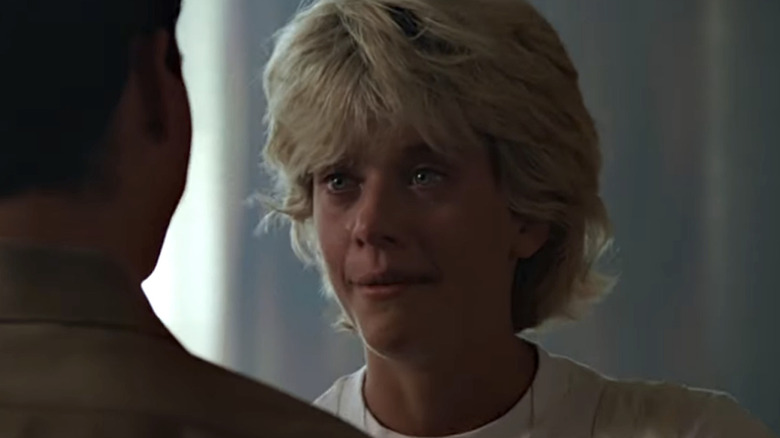
Meg Ryan didn't have a huge role in the original "Top Gun," but she was still plenty memorable as Goose's wife, Carole Bradshaw. Who can forget her delivery of the line, "Goose, you big stud, take me to bed or lose me forever"? She was also at the emotional center of the film, giving a terrific performance in a pivotal scene with Tom Cruise following Goose's death.
That death is still felt in "Top Gun: Maverick," as Maverick has to reckon with his past and help Goose's son, Rooster (played by Miles Teller), reach his potential in the cockpit. It also forms the main conflict of the film, with Maverick feeling guilt over Goose's death while Rooster maintains a grudge. So it certainly would have made sense to include Ryan's character. However, director Joseph Kosinski told Insider that he didn't feel like there was room in the story for Ryan (or McGillis, for that matter):
"Those weren't stories that we were throwing around. I didn't want every storyline to always be looking backwards. It was important to introduce some new characters."
Instead, we learn Ryan's character died in between the two movies, and the story focuses purely on the tension between Maverick and Rooster. While we might raise an eyebrow at Kosinski not wanting to look backward too much in a movie built around nostalgia (not to mention, him just-so-happening to leave out two of the rare female characters from the first "Top Gun" film), we certainly can't argue with the results. Because when it comes to "Top Gun: Maverick," it proved itself as the best of the best in 2022.
Read this next: The Best Action Movies Of 2022, Ranked
The post Meg Ryan Returning For Top Gun: Maverick Was Never On The Table appeared first on /Film.
Where More People Will Die -- and Live -- Because of Climate Change
Read more of this story at Slashdot.
Warwick Davis Filmed A Never-Seen Star Wars Mockumentary As Wicket
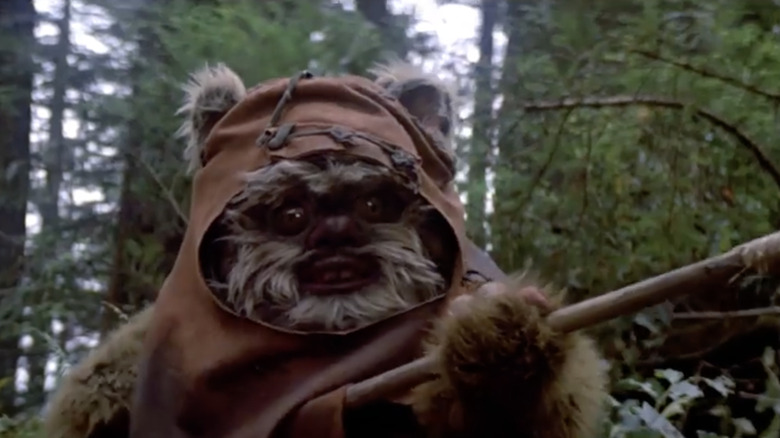
When the original "Star Wars" trilogy was first released in the late 1970s and early '80s, fans were starving for more things to watch in this world. With no streaming at the time, the only way to see your favorite film was to catch it in the theater or — if you or someone you knew were lucky enough to own a VCR — you could rent or buy VHS tapes of the movies, although you still couldn't rent "Star Wars" until 1982 or purchase your own VHS until 1984.
Watching "Star Wars" on television was also a rare occurrence. Creator George Lucas was against showing the movies on TV and owned the rights to the sequels. Twentieth Century Fox was only able to negotiate TV rights for "Star Wars: A New Hope." They finally did so in 1984 when CBS aired the film for the first time as a special presentation, hosted by Mark Hamill.
Back then, in what now feels like a long time ago in a galaxy far away, the "Star Wars" universe only consisted of the original three films, a quickly forgotten and horrifying holiday special in 1978, and two low-budget made-for-TV Ewok adventure movies. For years, that was all rabid fans had to satiate their appetites. But as Yoda says to Obi-Wan in "The Empire Strikes Back" — "There is another."
As it turns out, a promotional video featuring Warwick Davis, the actor who played Wicket in "Return of the Jedi," was shot during the making of the movie. The spot is a strange blend of mockumentary-style footage, "Star Wars" actors and characters, and clips from the film. However, it was never released.
And now, like Luke's long-missing blue lightsaber, it has been found.
Only Bootleg Versions Are Available

Warwick Davis was just 15 years old when he played Wicket the Ewok, one of the furry creatures inhabiting Endor in "Return of the Jedi." In addition to the movie, the Lucasfilm production team shot a comedic mockumentary about Davis' audition process for the film.
The 24-minute spot was titled "Return of the Ewok." It begins with Davis looking for a job. He tries out as a weightlifting training partner and the goalie for the Chelsea Football Club before stumbling across a job posting for an actor. After Davis discovers a 'Star Wars" flyer, Luke Skywalker leaps out of his battle with Darth Vader during "The Empire Strikes Back" into the street, where Davis tells him, "Go back, you can do it!"
Davis sneaks into an agent's office and tries on Boba Fett's helmet before settling on an Ewok outfit. Once Davis gets into costume, the fun begins. He wanders around Los Angeles as Wicket, popping in on actors behind the scenes of various "Return of the Jedi" sets. Carrie Fisher even appears in her dressing room clad in her infamous gold bikini.
At one point, Wicket wanders onto the set of Jabba's Palace, where Salacious B. Crumb rudely asks, "Who are you? What do you want?" Davis plays the character just like he does in "Return of the Jedi." He dances to Max Rebo's music and accidentally finds an off switch on C-3P0. Wicket also visits Dagobah and the Death Star. It's all very surreal.
There is a full version available online, cobbled together from official clips released on Starwars.com and footage recorded during festival screenings of the film. "Return of the Ewok" might be even more bizarre than the 1978 "Star Wars Holiday Special" but much more entertaining. So why wasn't it ever released?
Consent Is Not Strong With This One
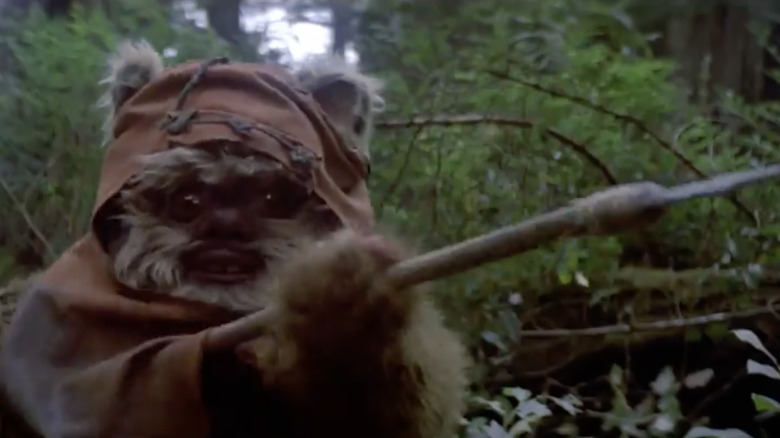
For the longest time, "Return of the Ewok" was just an urban legend, and even today there is no fully produced version of the mockumentary. It sounds like the video was a passion project of Lucasfilm second unit director, David Tomblin. According to a 2010 Gizmodo article, plans for "Return of the Ewok" were scrapped in post-production, and Warick Davis retained the only VHS copy of the unfinished film.
The actor later loaned the copy to Lucasfilm to digitize it, and it was screened at a few fan festivals. Eventually, the entire mockumentary was pieced together and posted online as a bootleg.
Davis hinted that the video's non-release might have been an issue of consent. He recently told Uproxx in a November 2022 interview:
"I mean, I think the challenge with 'Return of the Ewok' is that so many people gave their time, there are these wonderful cameos in there, [the] crew gave time during lunch hours to make it, and nobody ever signed off on their involvement ... But it really is one of those found in the attic kind of creations, isn't it, in its very raw form? There's unfinished sound, the print is very rough, but I think that's one of the charms of it, really."
The film's charm was formally recognized at The Official "Star Wars" Fan Film Awards in 2005, where "Return of the Ewok" and director David Tomblin received the Pioneer Award. Davis also featured stills from the film in his 2011 autobiography, "Size Matters Not: The Extraordinary Life and Career of Warwick Davis." But no matter how much we try to will it to happen with the Force, Disney has no plans to resurrect the project.
Read this next: Star Wars Deleted Scenes That Could've Changed Everything
The post Warwick Davis Filmed A Never-Seen Star Wars Mockumentary As Wicket appeared first on /Film.

























